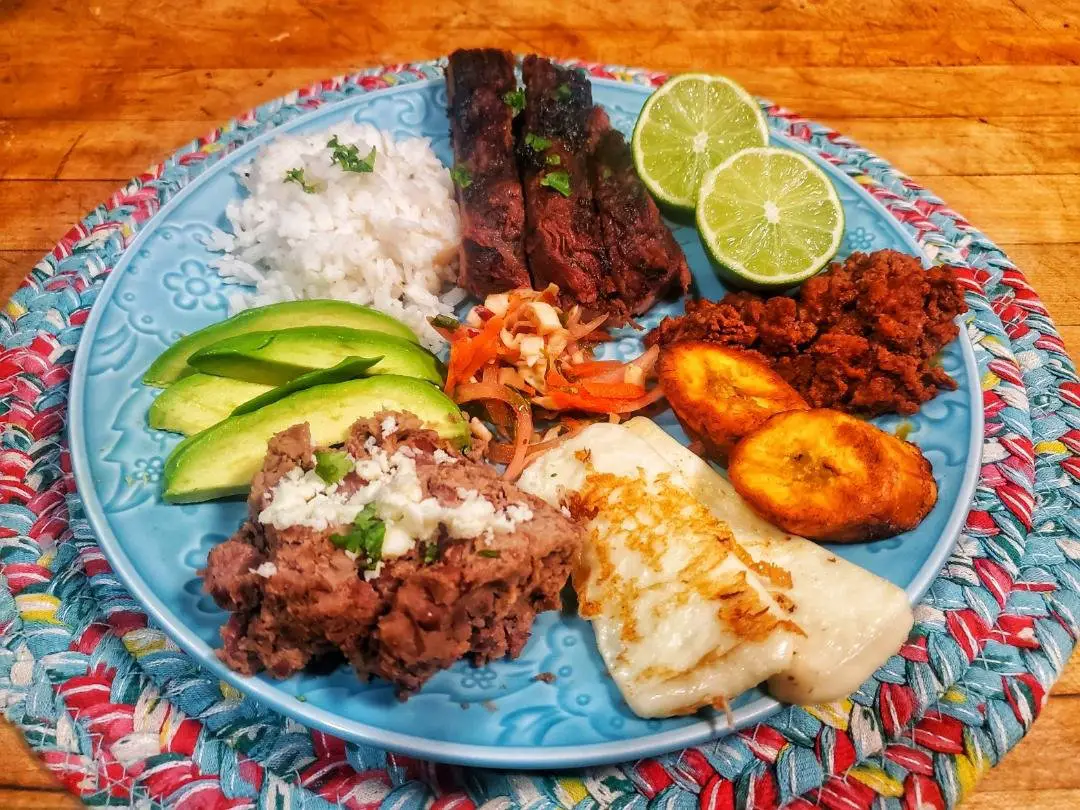Take Me to the Recipes
Forget bland stereotypes of tacos and burritos – Honduras’ culinary scene explodes with unexpected delights, deeply rooted in the nation’s captivating history, diverse geography, and vibrant climate.
Imagine fiery stews simmering in the crisp Andean air, fresh seafood plucked straight from the turquoise Pacific, and exotic fruits bursting with flavor in the Amazonian heat. Each bite tells a story, transporting you through time and across landscapes, offering a glimpse into the rich tapestry of Honduran culture.
But what truly defines this captivating cuisine? Buckle up, food adventurers, as we embark on a delicious journey to explore the soul of Honduran food. We’ll delve into the historical influences that shaped iconic dishes like “locro de papa” and “encebollado,” discover how the Andes cradle hearty stews while the coast offers up a bounty of seafood, and understand how the unique climate dictates the seasonal symphony of flavors that graces Honduran tables.
So, ditch the guidebooks and prepare to be surprised. From the melt-in-your-mouth “llapingachos” to the adventurous “cuy,” Honduras’ cuisine promises a delightful adventure for every palate. Let’s raise a glass (of local “chicha”?) to this flavorful exploration – ¡Buen provecho!
Take Me to the Recipes
Key Takeaways
- Honduran cuisine is a fusion of indigenous, European, and African culinary traditions.
- Traditional Honduran dishes represent the country’s culinary heritage and offer a taste of authenticity.
- You can prepare authentic Honduran recipes such as baleadas and sopa de caracol at home.
- A variety of cultures influence the gastronomy of Honduras resulting in a unique blend of flavors and ingredients.
- Preserving and celebrating culinary traditions is important in embracing the flavors of Honduras.
Where is Honduras?
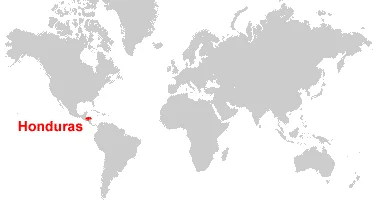
Honduras is located in Central America, bordering the Caribbean Sea, between Guatemala and Nicaragua and bordering the Gulf of Fonseca (North Pacific Ocean), between El Salvador and Nicaragua.

Index to the Contents
- Take Me to the Recipes
- More articles
- 10 Interesting Facts about Honduras
- The Honduras’s history and the affect it has had on the cuisine
- How Honduras’s Climate and Geography has influenced its Cuisine
- Understanding the Essence of Honduras’s Cuisine
- Honduran Culinary Traditions
- Exploring Honduras’s Ingredients: The Flavors of Honduras Cuisine
- Traditional Examples of Honduran Food
- Exploring Honduran Street Food
- The Most Popular Honduran Recipes
- What are the Health Implications of Honduran Cuisine?
- Honduras National Dish
- Honduran Cuisine Recipes to Try at Home
- Conclusion
- FAQ’s
You May also be interested in the following articles
- North and South American Cuisine – A Culinary Expedition
- Europe Cuisine: Savor the Continent’s Best Culinary Secrets!
- African Cuisine: Discover the Bold Flavors & Global Charm!
- Asian Cuisine Unlock its Secrets – Taste, Health & Global Influence!
Savor iconic Honduran Food Recipes – Click on each tantalizing picture to open up the Recipe.
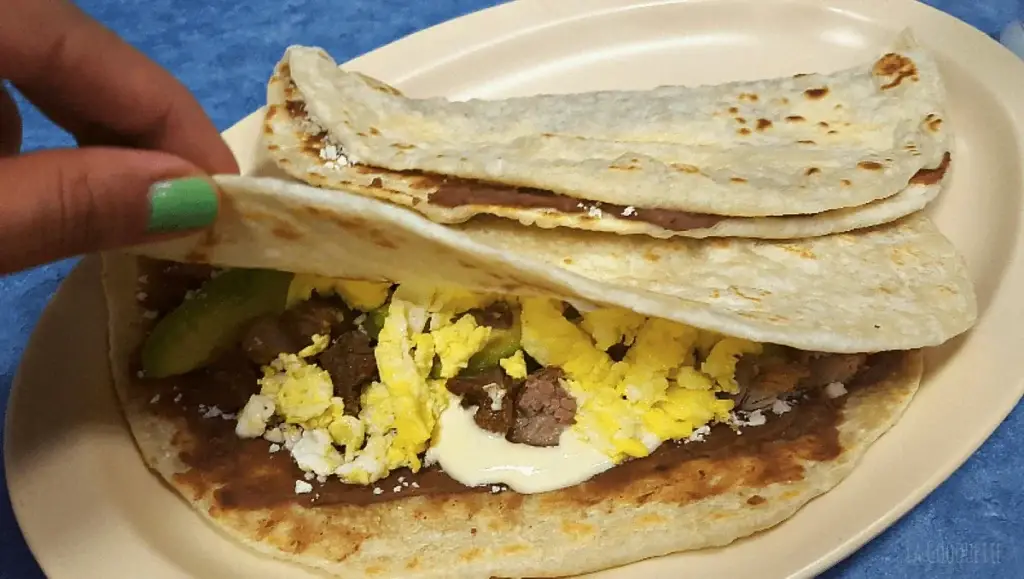
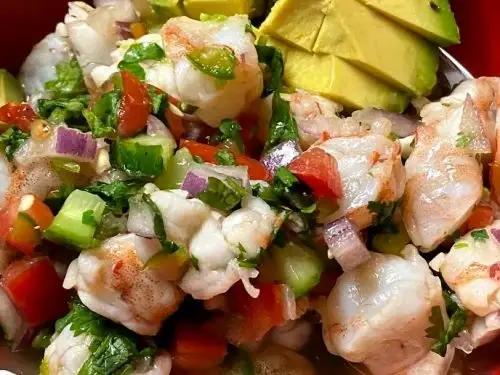
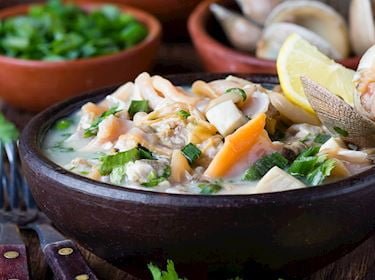
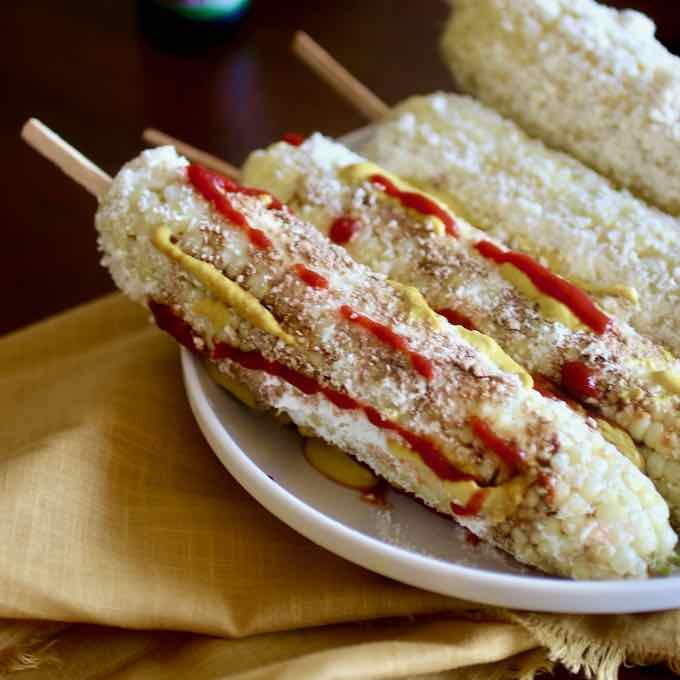
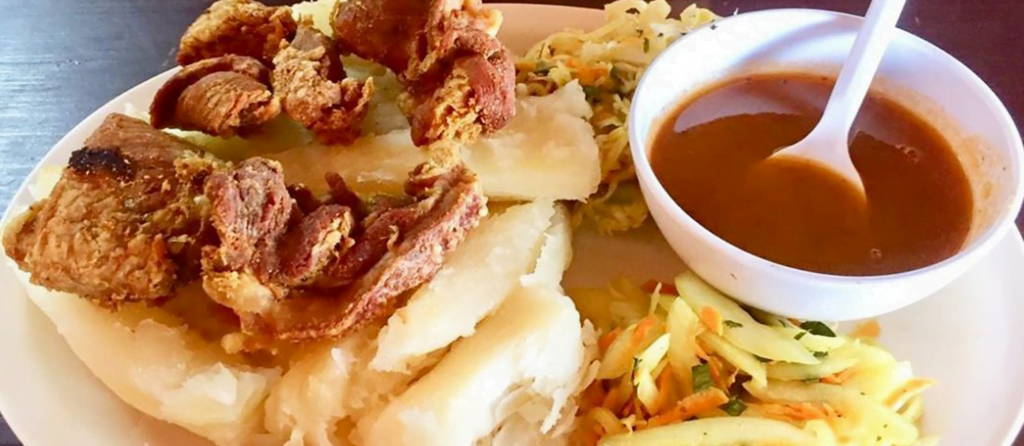
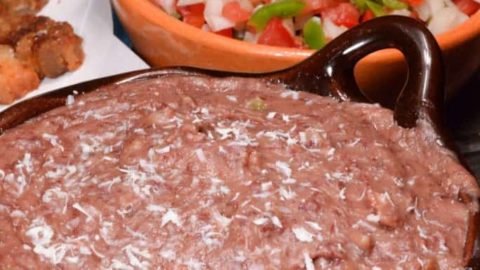
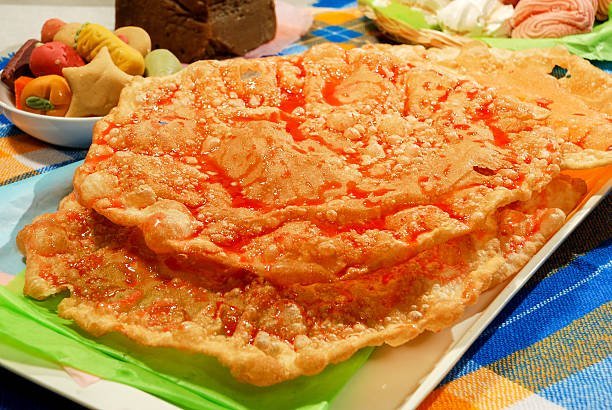
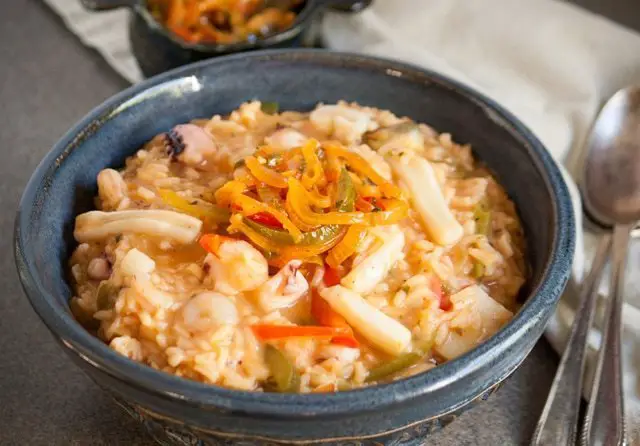
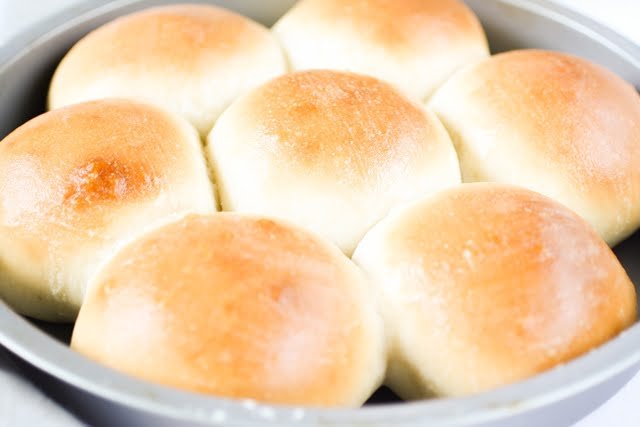
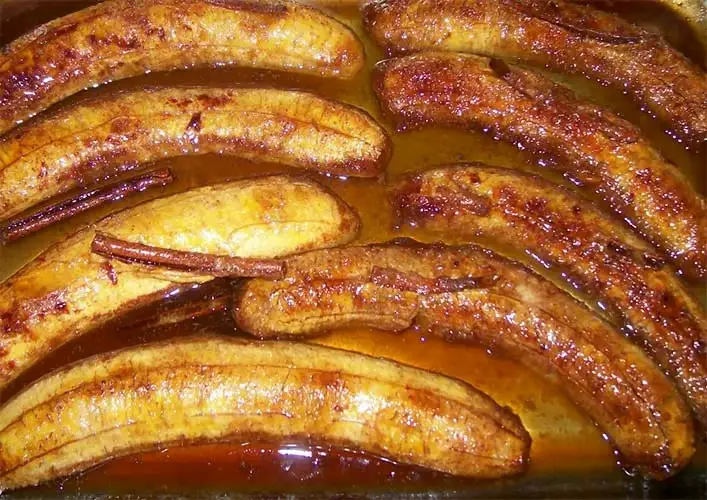
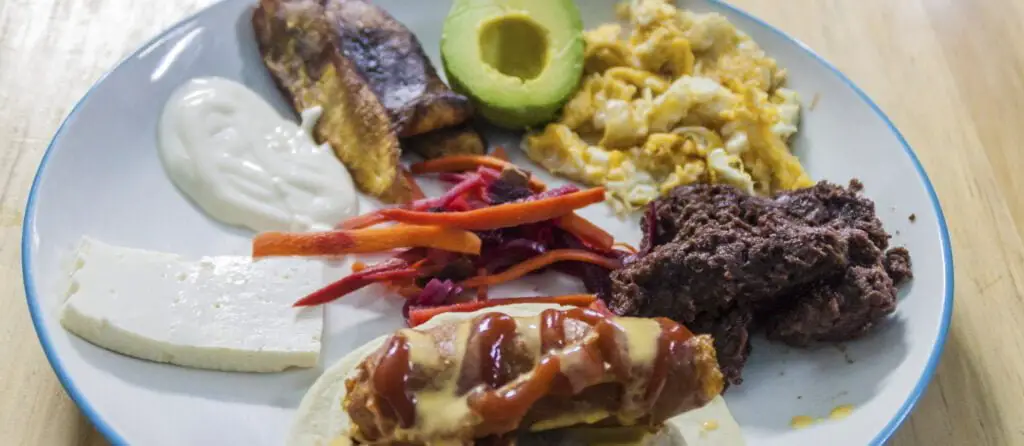
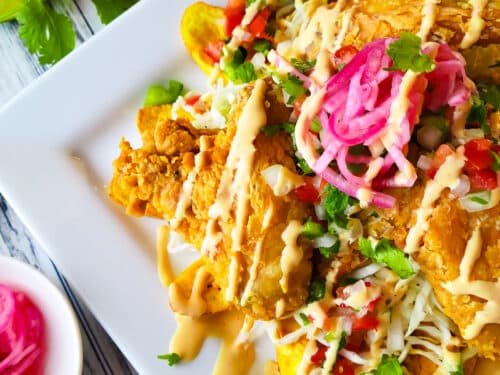
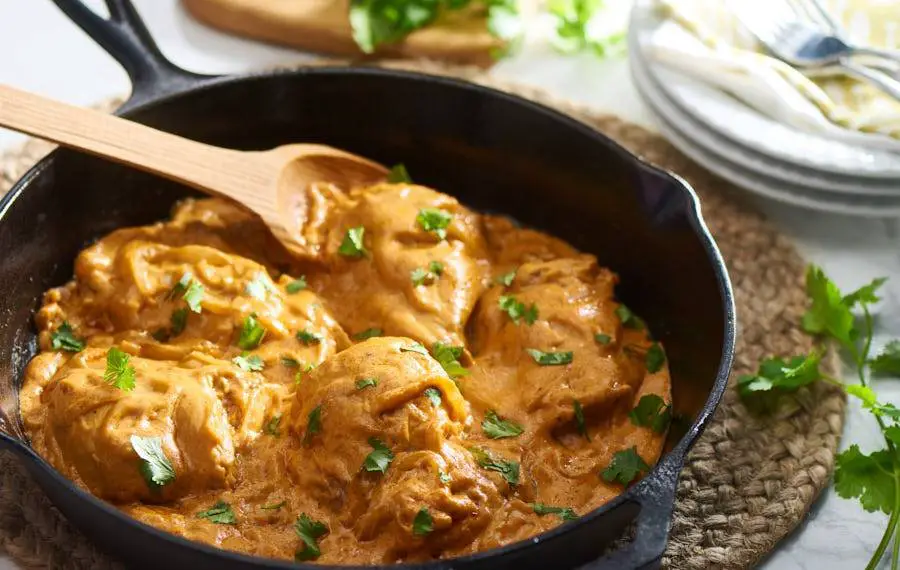
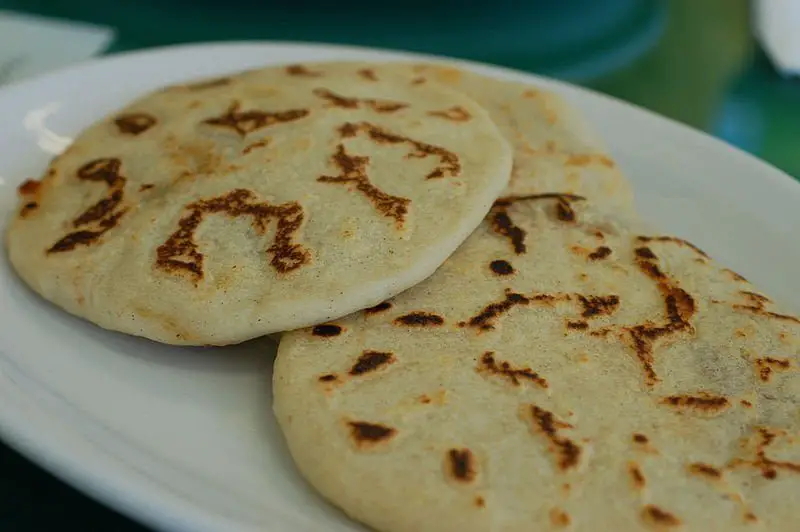
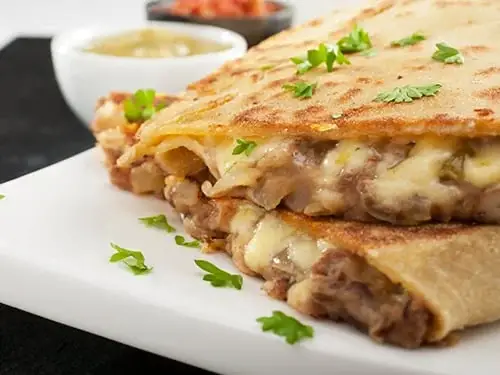
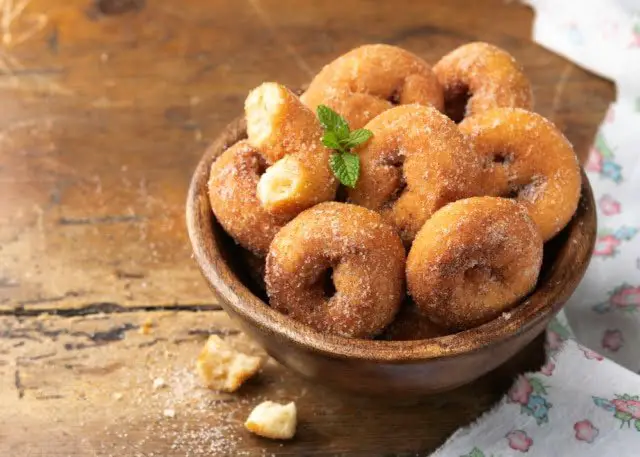
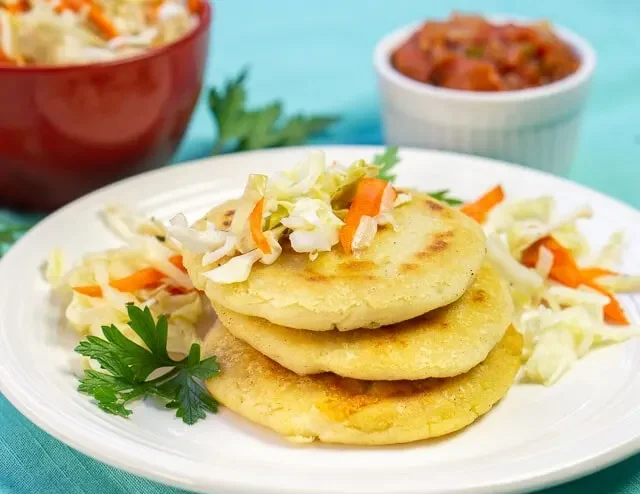
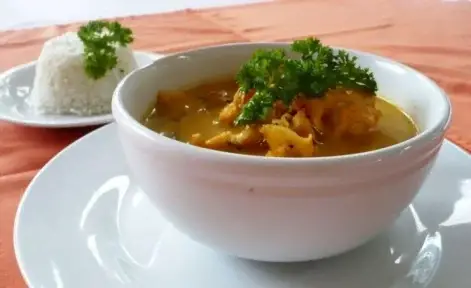
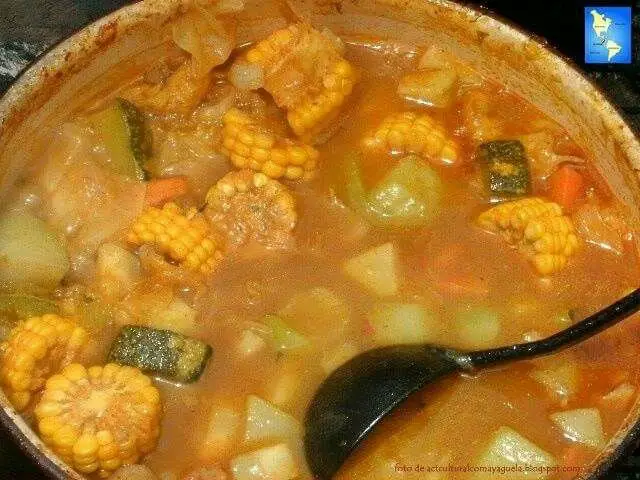
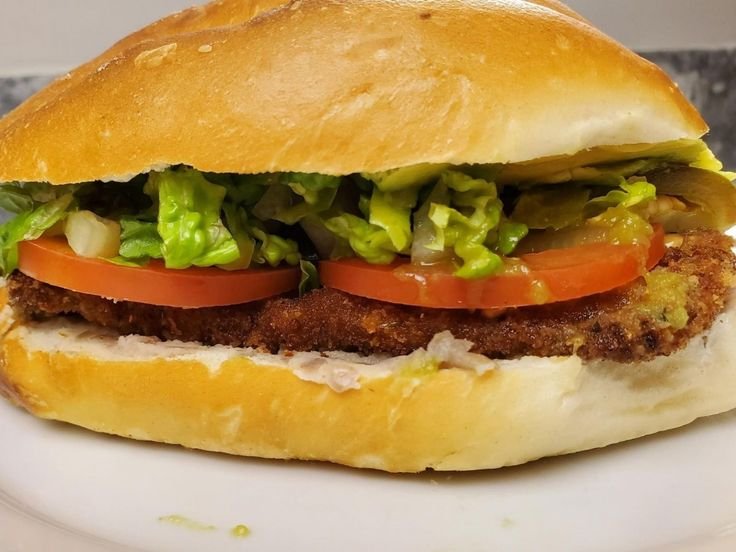
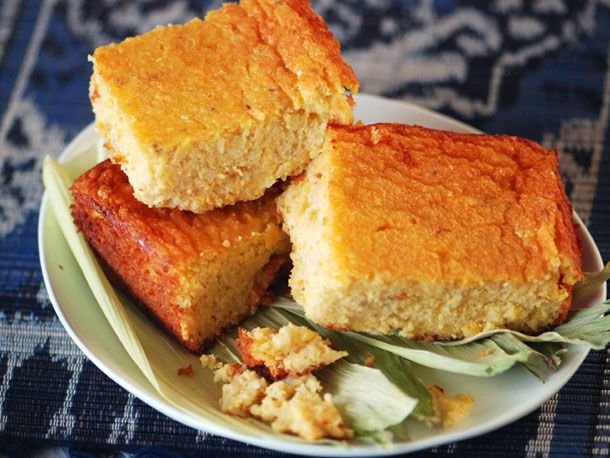
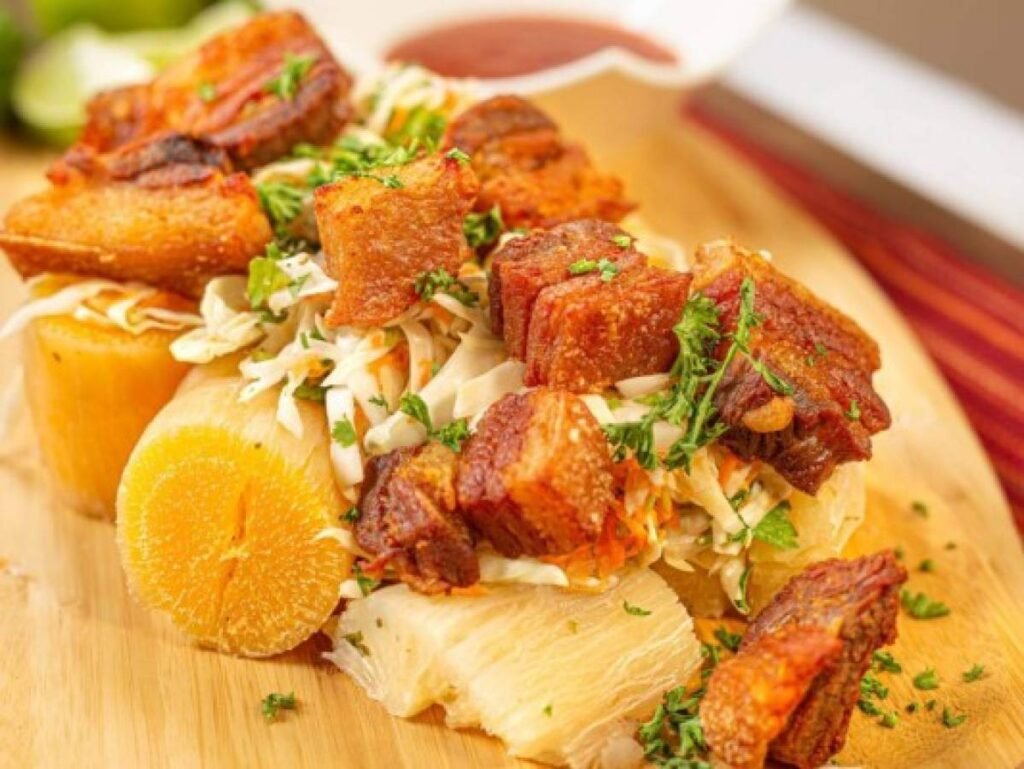
10 Fascinating Facts about Honduras
Honduras, nestled between Guatemala and Nicaragua, is often overshadowed by its tourist-heavy neighbors. But beyond the stunning beaches and lush rainforests lies a land teeming with unexpected stories and quirks.
Buckle up for 10 fascinating, strange, and even slightly disturbing facts about Honduras that will leave you wanting to explore this hidden gem:
The “Banana Republic” Wasn’t Just a Nickname

In the early 20th century, American fruit companies like United Fruit held immense power in Honduras, effectively ruling the economy and influencing politics.
This era, dubbed the “Banana Republic,” highlights the complex history of foreign influence in the country.
Home to the Smallest Dollar Bill
Hondurans carry the world’s smallest legal tender – the 50-centara note, about the size of a postage stamp! It’s a quirky reminder of the country’s unique economic landscape.
Beware of the “Copán Curse”

Legend has it that disturbing the ancient Mayan tombs at Copán ruins will unleash misfortune. While the curse’s validity is debatable, it adds a touch of mystery to this archaeological treasure trove.
Mosquitos with a Taste for Humans
Prepare for battle! Honduras has some of the world’s fiercest mosquitos, known for carrying diseases like dengue and malaria. Pack repellent and embrace the “swat or be swatted” mentality.
Home to the “World’s Most Dangerous Airport”
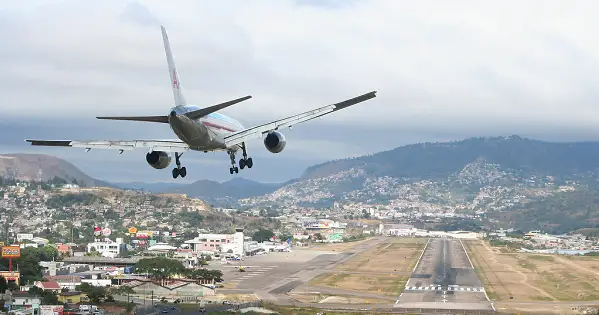
Thanks to its short runway and mountainous terrain, Toncontín International Airport in Tegucigalpa has earned this dubious title. Prepare for a thrilling (or anxiety-inducing) landing!
Beware of the “Cadejos”
Honduran folklore warns of two ghostly dogs, the white “Cadejo Blanco” representing good and the black “Cadejo Negro” symbolizing evil. Keep an eye out for these spectral companions on moonlit nights (if you dare)!
Dive into the “Blue Hole”

The Great Blue Hole, a giant underwater sinkhole off the coast of Belize, extends into Honduran waters. This natural wonder, teeming with marine life, is a diver’s paradise (with a healthy dose of awe).
Chocolate Runs Deep

Honduras boasts a rich history of cacao cultivation, dating back to the Maya. Today, artisanal chocolate makers are reviving this tradition, offering delicious bean-to-bar treats. Chocoholics rejoice!
Home to the “Ciudad Blanca” Mystery
Deep in the Mosquitia jungle lies the legendary “White City,” a lost civilization rumored to be made of gold. While its existence remains unproven, the search for this mythical metropolis continues to fuel imaginations.
These are just a few of the many intriguing facts that await you in Honduras. So, ditch the stereotypes and dive into this captivating country.
You might just find yourself cursed by mosquitos, dancing with death, or sipping on some world-class chocolate, all while uncovering the true soul of Honduras. Remember, the most interesting journeys often involve unexpected detours!
The Honduras’s history and the affect it has had on the Cuisine
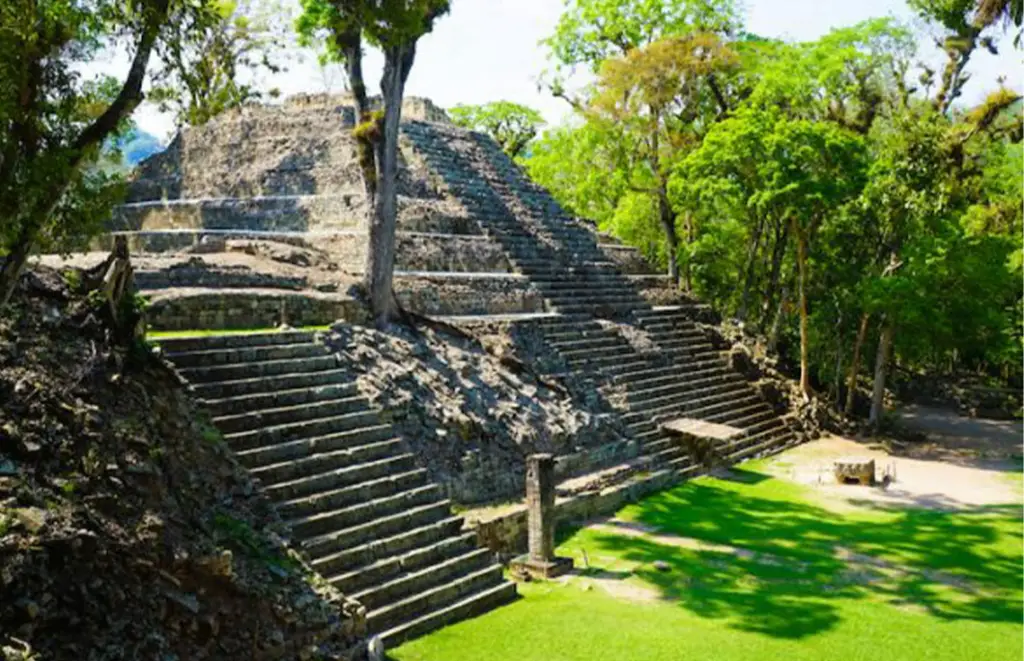
Forget bland stereotypes and prepare to embark on a delicious expedition through the history of Honduran cuisine! Each bite tells a story, reflecting centuries of cultural exchange and the unique influences that shaped this vibrant culinary scene.
Ancient Flavors, Enduring Legacy (Pre-Columbian Era)
Imagine thriving Mayan communities, like Copán, cultivating the land and laying the foundation for Honduran cuisine. From 150 AD to the 9th century, they nurtured corn, beans, and other staples that remain central to the Honduran table today.
Their legacy lives on in the cooking techniques and flavors that continue to tantalize taste buds.
A Fusion of Cultures (Colonial Era)

Fast forward to the 16th century, when Spanish conquistadors arrived, introducing a new chapter in Honduran culinary history. Wheat, rice, sugarcane, and livestock joined the local ingredients, creating a vibrant fusion.
Dishes like “baleadas” – those irresistible flour tortillas bursting with flavor – and the rich “sopa de caracol” (conch soup) are testaments to this delicious blend. Spanish techniques like frying and baking became cornerstones of Honduran cooking, further enriching the culinary landscape.
Independence and Beyond (Post-Colonial Era)
With independence in 1821, Honduras charted its own culinary course. Indigenous, Spanish, and African influences interweaved, creating a tapestry of unique flavors. Corn, beans, plantains, and tropical fruits continued to reign supreme, while seafood from the Caribbean and Pacific coasts added a touch of coastal charm.
Dishes like “sopa de mondongo” (tripe soup) and “tamales” (corn dough delights) showcase this beautiful mix of heritage.
Modern Twists on Tradition (20th Century and Beyond)
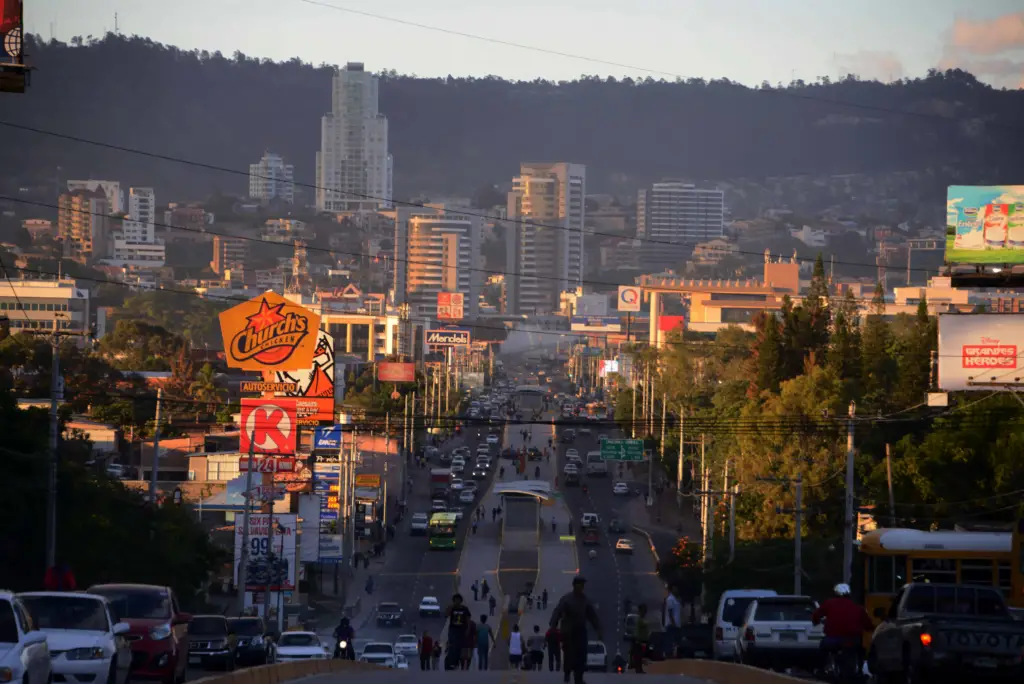
The 20th century brought global influences, with American fast food, Chinese stir-fries, and Italian pasta finding their way onto Honduran tables. Yet, traditional dishes like the hearty “plato típico” (a feast of rice, beans, plantains, and meat), the irresistible “yucca con chicharrón” (fried yucca with pork), and the sweet “tortas de elote” (corn cakes) hold their own.
The use of spices, tropical fruits, and fresh seafood remains central, ensuring that Honduran cuisine retains its unique character.
Beyond the Plate
Honduran cuisine is more than just food; it’s a cultural experience, a journey through history, and a testament to the country’s vibrant spirit.
References
How Honduras’s Climate and Geography has influenced its Cuisine

Honduras is a country in Central America that has a diverse and rich cuisine that reflects its climate and geography. Honduras has two main climatic zones: the tropical lowlands along the Caribbean Sea and the Pacific Ocean, and the temperate highlands in the interior.
The lowlands have a hot and humid climate, with abundant rainfall and fertile soil, while the highlands have a cooler and drier climate, with less rainfall and poorer soil. These climatic differences affect the availability and variety of ingredients, as well as the cooking methods and preferences of the people.
The Honduran Lowlands

The lowlands are the main source of fruits, vegetables, grains, and seafood in Honduras. The tropical climate allows for the cultivation of crops such as
- Bananas,
- Plantains
- Pineapples
- Mangoes
- Papayas
- Coconuts
- Corn
- Rice
- Beans
- Cassava.
The lowlands also have access to the rich marine resources of the Caribbean Sea and the Pacific Ocean, such as fish, shrimp, lobster, conch, and crab. The lowland Honduran food cuisine uses fresh and natural ingredients.
They incorporate spices, herbs, and sauces, such as aji, a spicy sauce made with chili peppers, onion, cilantro, and lime juice.
Some of the most popular dishes of the lowland cuisine are baleadas, thick wheat tortillas filled with beans, cheese, and other ingredients; sopa de caracol, a soup made with conch, coconut milk, and spices; and plato típico, a plate of rice, beans, cheese, fried plantains, eggs, and meat.
The Honduran Highlands
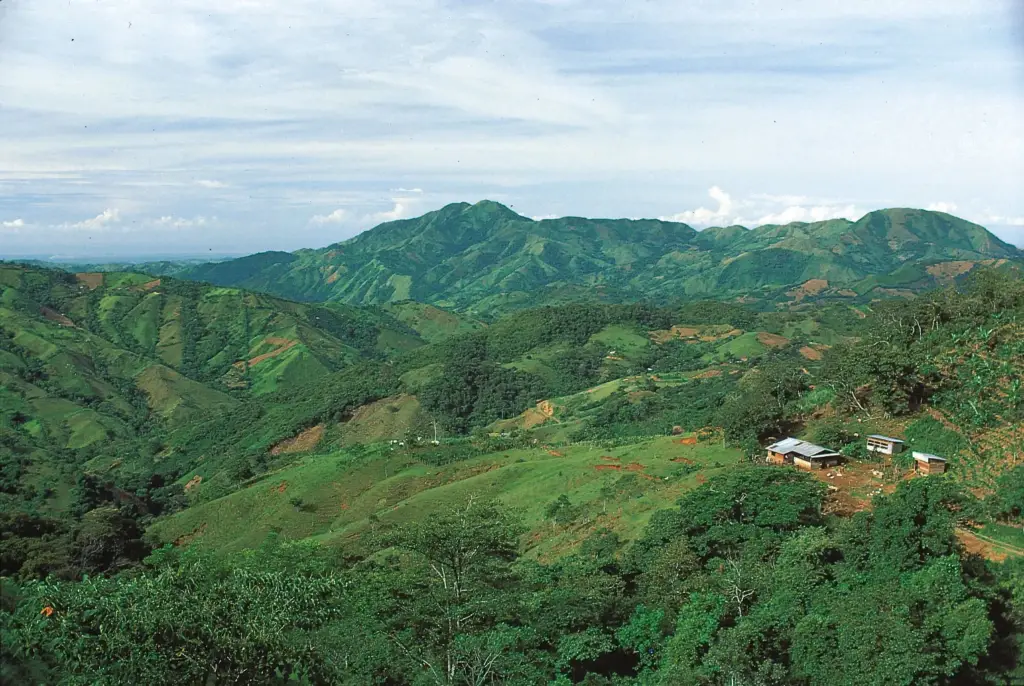
The highlands are the main source of meat, dairy, and potatoes in Honduras. The temperate climate allows for the raising of livestock, such as cattle, pigs, goats, and chickens, as well as the production of cheese and other dairy products.
The highlands also have a variety of Honduran food such as potatoes, such as white, red, and purple, that make soups, stews, and salads. The highland cuisine uses meat, cheese, and potatoes, as well as the use of frying, baking, and roasting as cooking methods.
Some of the most traditional dishes of the highland cuisine are carne asada, grilled meat with chimichurri sauce; quesadillas, cheese-filled pastries; and sopa de mondongo, a soup made with tripe, potatoes, and vegetables.
Understanding the Essence of Honduras’s Cuisine

Buckle up, foodies, as we delve into the soul of Honduran food, a symphony of taste that will leave you wanting more.
A Fusion Fiesta
Imagine a culinary dance where Mayan corn meets Spanish spices, African rhythms mingle with Caribbean seafood, and indigenous ingenuity sparks modern innovation. That’s the essence of Honduran cuisine – a vibrant blend of influences that creates something entirely new and captivating.
Dishes like “baleadas,” those flour tortillas bursting with savory fillings, are a testament to this fusion, reflecting the legacy of both indigenous staples and Spanish techniques.
More Than Just Beans
While beans are indeed a beloved staple, Honduran cuisine offers far more depth. Imagine tender “pollo en crema” (chicken in creamy sauce), infused with achiote’s earthy warmth, or the fiery “sopa de mondongo” (tripe soup), a testament to the country’s love for bold flavors.
Don’t miss the “yuca con chicharrón,” where crispy yucca dances with melt-in-your-mouth pork, or the sweet “tortas de elote,” corn cakes bursting with sunshine flavors. Each bite is a celebration of local ingredients and culinary creativity.
A Tropical Twist
Honduran cuisine embraces its tropical location. Imagine fresh seafood delicacies like “pescado frito” (fried fish) kissed by the Caribbean breeze, or succulent “cocido de mariscos” (seafood stew) simmering with the bounty of the Pacific.
Tropical fruits like mango, pineapple, and passion fruit add a vibrant sweetness to dishes and drinks, creating a refreshing counterpoint to the savory spices.
Beyond the Plate
The essence of Honduran cuisine goes beyond the ingredients. It’s about the warmth of sharing a “plato típico” (a hearty communal meal) with loved ones, the joy of celebrating with a glass of locally brewed “chicha,” and the pride in using generations-old recipes passed down through families.
It’s a culture where food is more than sustenance; it’s a thread that connects communities and tells stories.
Buen provecho!
Honduran Culinary Traditions
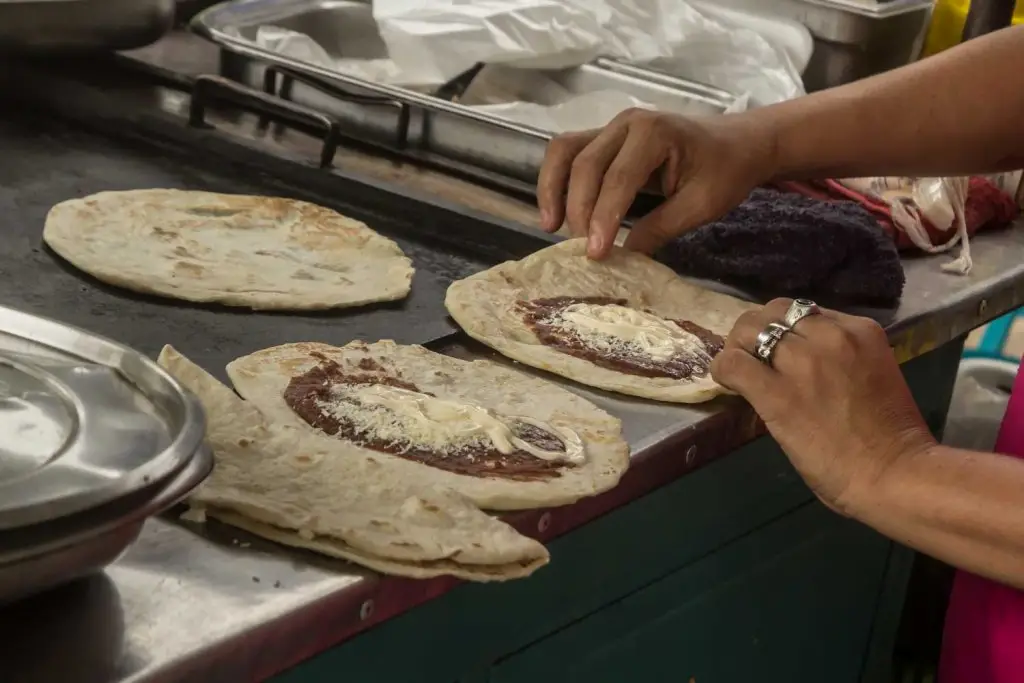
Let’s embark on a delicious journey through some of the most cherished culinary practices that define Honduran food culture.
From Cornfields to Kitchens: Honoring the Mayan Legacy
Corn, a gift from the Mayans, forms the cornerstone of Honduran cuisine. Witness the reverence given to this sacred grain in dishes like “tortillas,” the versatile flatbreads enjoyed at every meal.
Look beyond the ubiquitous “baleadas” and explore regional variations like “salvadoreñas” (stuffed with cheese and avocado) or “campesinas” (topped with scrambled eggs). Every fold whispers tales of ancient Mayan ingenuity and enduring legacy.
Spanish Encounters: A Fusion of Flavors
The arrival of the Spanish in the 16th century brought new ingredients and techniques, igniting a culinary revolution.
Spices like cumin and achiote added warmth and depth, while wheat flour birthed “pan de coco” (sweet coconut bread) and “hojuelas” (crispy pastries). The iconic “sopa de caracol” (conch soup).
A Blend of Cultures: African and Indigenous Influences
African influences enrich Honduran food with vibrant spices and unique preparations. Explore “plátanos fritos” (fried plantains), a legacy of enslaved Africans who brought this versatile fruit to the Americas.
The use of coconut milk in dishes like “guacho” (a seafood stew) reflects the culinary heritage of Afro-Caribbean communities.
Celebrating the Sea: Treasures from the Caribbean and Pacific
Honduras boasts over 800 kilometers of coastline, offering an abundance of fresh seafood. Sample “pescado frito” (fried fish), a simple yet soul-satisfying dish seasoned with achiote and lime.
Indulge in “cocido de mariscos” (seafood stew), a vibrant medley of shrimp, fish, and conch simmered in coconut milk and spices. Each bite celebrates the bounty of the sea and the coastal communities that cherish it.
From Humble Staples to Festive Feasts
Honduran cuisine thrives on its simplicity, using readily available ingredients to create flavorful dishes. Witness this in “frijoles fritos” (fried beans), a humble side dish elevated by the skillful use of herbs and spices.
But don’t underestimate the festive spirit! “Plato típico” (a typical plate) showcases the abundance of Honduras, featuring rice, beans, plantains, meat, and fresh vegetables, a hearty feast meant to be shared with loved ones.
Exploring Honduran Ingredients: The Flavors of Honduras Cuisine
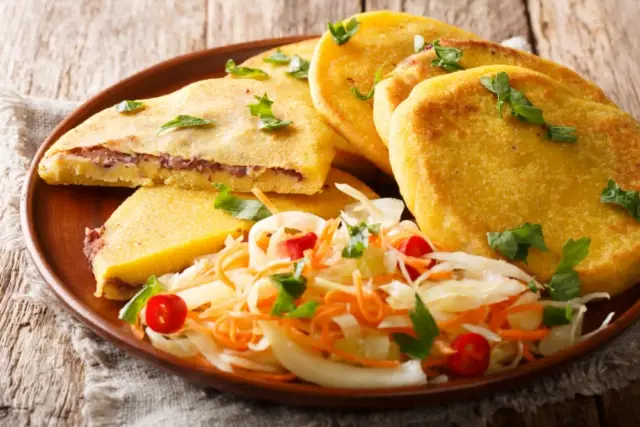
Honduran food cuisine is a feast for the senses, offering a variety of flavors, aromas, textures, and colors that reflect the country’s diversity and richness. Honduran food cuisine uses fresh and natural ingredients, many of which are native to the country.
Some of the most common and distinctive Honduran food ingredients are:
Corn
Corn is one of the most important crops in Honduras and is used in many dishes and preparations, such as tortillas, tamales, atol, and chicha.
It is also used to make flour, starch, and oil, as well as snacks, such as cancha, which are roasted corn kernels, and tostado, which are fried corn kernels.
Beans
Beans are a source of protein and fiber in Honduras’s cuisine and are cooked in different ways, such as boiled, fried, or mashed. They are used to make dishes, such as baleadas, which are thick wheat tortillas filled with beans, cheese, and other ingredients, and casamiento, which is a mixture of rice and beans.
Beans are also eaten as a salad, such as ensalada de frijoles, which is a salad of beans with onion, tomato, and cilantro, or as a dip, such as frijoles molidos, which is a dip of beans with garlic, cheese, and cream.
Cheese
Cheese is a dairy product that is widely used in Honduras’s cuisine, especially in the highland region, where it is produced and consumed. It is used to make dishes, such as quesadillas, which are cheese-filled pastries, and enchiladas, which are tortillas stuffed with cheese, meat, and vegetables.
is also eaten as a snack, such as queso fresco, which is fresh cheese, and queso duro, which is hard cheese.
Plantains
Plantains are a type of banana that are cooked before eating and are used in both savory and sweet dishes. They are used to make dishes, such as tajadas, which are fried plantain slices, and pastel de plátano, which is a plantain pie with meat and cheese.
Plantains are also eaten boiled, baked, or mashed, and are often served with cheese, sour cream, or honey.
Coconut
Coconut is a tropical fruit that is widely used in the coastal region of Honduras, where it is abundant and fresh. It is used to make dishes, such as sopa de caracol, which is a soup made with conch, coconut milk, and spices, and arroz con coco, which is rice cooked with coconut milk and sugar.
Coconut is also used to make drinks, such as agua de coco, which is coconut water, and horchata de coco, which is a sweet and refreshing drink made with coconut milk, rice, cinnamon, and vanilla.
Seafood
Seafood is a delicacy in Honduras’s cuisine, especially in the coastal region and the Bay Islands, where it is abundant and fresh.
It is used to make dishes, such as ceviche, which is raw seafood marinated in citrus juice and spices, and pescado frito, which is fried fish with garlic and lemon.
Seafood is also used to make soups, such as sopa marinera, which is a seafood soup, and tapado, which is a seafood stew with plantains and coconut milk.
Traditional Examples of Honduran Food
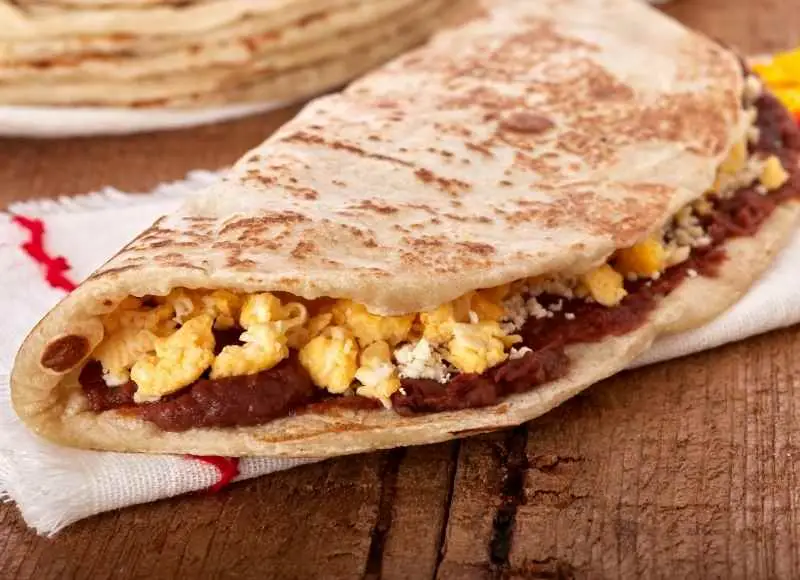
Let’s embark on a culinary adventure to discover 5 iconic dishes that will tantalize your taste buds and transport you to the heart of Honduras:
Baleadas: The Undisputed Champion
Imagine a warm, flour tortilla cradling a symphony of flavors. Meet the “baleada,” the undisputed champion of Honduran street food. Choose your fillings – savory refried beans, creamy avocado, tangy cheese, and succulent meats like chorizo or fried chicken – and witness them transform this simple flatbread into a flavor explosion.
Don’t miss the “baleada especial,” a monster version loaded with everything!
Sopa de Caracol: A Seafood Symphony
Dive into the depths of Honduran culinary heritage with “sopa de caracol,” a conch soup teeming with Caribbean charm. Tender conch simmers in a rich coconut milk broth, infused with vibrant spices like cumin, achiote, and oregano.
The result is a complex and flavorful journey that celebrates the bounty of the sea.
Pollo Chuco: A Smoky Sensation
Honduran fire meets smoky allure in “pollo chuco,” a dish that will tantalize your senses. Succulent chicken is marinated in achiote paste, then slow-cooked over charcoal, infusing it with a deep, smoky flavor.
Pair it with fried plantains, “tajadas,” for a perfect balance of sweet and savory.
Plato Típico: A Feast for the Senses
Experience the abundance of Honduras with “plato típico,” a hearty feast meant to be shared. Imagine fluffy rice, creamy beans, sweet fried plantains, and a choice of meat like grilled chicken or savory pork, all brought together on a vibrant plate.
Don’t forget the “tortillas” and a squeeze of lime for an extra burst of flavor!
Rosquillas: A Sweet Ending
End your Honduran culinary adventure on a sweet note with “rosquillas,” delicate cookies that melt in your mouth. These ring-shaped treats come in various flavors, from the classic anise to the more adventurous coconut or pineapple.
Enjoy them with a cup of Honduran coffee for the perfect finale.
Exploring Honduran Street Food
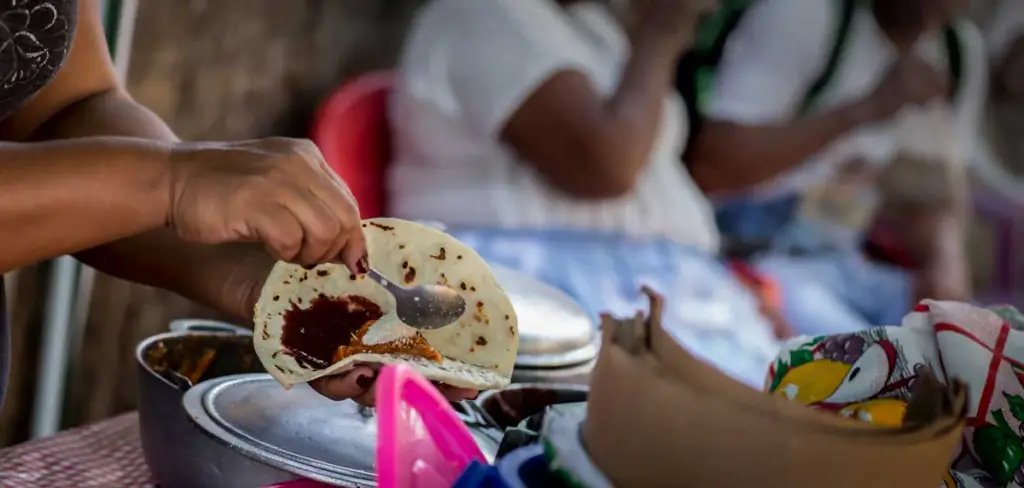
Forget fancy restaurants and Michelin stars – the heart of Honduran cuisine beats on its bustling streets. Imagine vibrant stalls bursting with color, enticing aromas wafting through the air, and friendly vendors ready to share the secrets of their culinary magic.
Buckle up, foodies, as we embark on a delicious adventure through the Honduran street food scene, exploring 5 must-try recipes that will leave your taste buds begging for more:
Baleadas: The Undisputed Queen
The undisputed queen of Honduran street food reigns supreme – the baleada. Picture a warm flour tortilla, cradled in your hand, waiting to be filled with a symphony of flavors. Choose your adventure: creamy refried beans, tangy cheese, savory avocado, or succulent meats like chorizo or fried chicken.
Each bite is a fiesta, bursting with fresh ingredients and local love. Don’t miss the “baleada especial” – a monster version loaded with everything!
Pupusas: A Taste of Friendship
Crossing the border into Honduran street food territory, we encounter the pupusa, a Salvadoran import that has found a happy home here. These thick, griddle-cooked corn tortillas are stuffed with savory goodness like refried beans, cheese, chicharrones (crispy fried pork), or loroco (a delicious edible flower).
Served with a dollop of curtido (pickled cabbage slaw) and a fiery salsa, each bite is a delightful dance of textures and flavors.
Yuca con Chicharrón: A Match Made in Flavor Heaven
This dynamic duo is a Honduran street food classic. Imagine crispy yuca fries, golden and irresistible, paired with melt-in-your-mouth chicharrón (deep-fried pork belly). The contrasting textures and complementary flavors create an explosion in your mouth.
Add a squeeze of lime and a sprinkle of cilantro for a refreshing twist.
Elotes Locos: Crazy for Corn on the Cob
Street food doesn’t get more fun (or messy!) than elotes locos, literally “crazy corn.” This playful take on grilled corn on the cob gets dressed up with a fiesta of toppings.
Think mayonnaise, cheese, chili powder, lime juice, and even hot Cheetos – the possibilities are endless! It’s a flavor adventure waiting to happen, one delicious bite at a time.
Tortas de Carne: A Savory Snack on the Go
Need a quick and satisfying bite? Look no further than tortas de carne. These savory turnovers are filled with ground beef, potatoes, peas, and spices, then fried to golden perfection.
Drizzle with a touch of salsa for a flavor kick, and you’ve got the perfect on-the-go snack to fuel your Honduran street food exploration.
The Most Popular Honduran Recipes

Baleada Bliss – A Honduran Breakfast Classic
Explore the enticing world of Honduran breakfasts with the beloved “Baleada.” A soft flour tortilla filled with creamy refried beans, crumbled cheese, and a choice of savory fillings like eggs, avocado, or Honduran chorizo.
This versatile and satisfying dish is a breakfast staple enjoyed by locals and visitors alike.
Savoring the Sea – Honduran Conch Soup
Dive into the coastal flavors of Honduras with the delectable Conch Soup. This seafood delight features tender conch meat simmered in a flavorful broth enriched with coconut milk, yams, and plantains.
Bursting with tropical essence, this soup is a true celebration of Honduran maritime cuisine.
Delightful Simplicity – Honduran Plato Típico
Experience the heart of Honduran culinary tradition with the “Plato Típico.” This simple yet soul-satisfying dish comprises rice, beans, fried plantains, and a choice of protein, often including grilled or fried meats.
A comforting and wholesome representation of the everyday meals enjoyed across Honduras.
Street Food Fiesta – Honduran Baleada de Pollo
Join the vibrant street food scene in Honduras with the “Baleada de Pollo.” This spin on the classic Baleada features succulent shredded chicken, creating a mouthwatering fusion of flavors.
Topped with cabbage, avocado, and a drizzle of crema, this handheld delight is a street food favorite throughout the country.
Sweet Indulgence – Honduran Tres Leches Cake
Indulge your sweet tooth with the heavenly Honduran Tres Leches Cake. This moist sponge cake is soaked in a trio of milks—evaporated milk, condensed milk, and heavy cream—creating a luscious and decadent treat.
Topped with whipped cream or meringue, this dessert is a must-try for those with a penchant for sweet delights.
What are the health implications of Honduran Food cuisine?
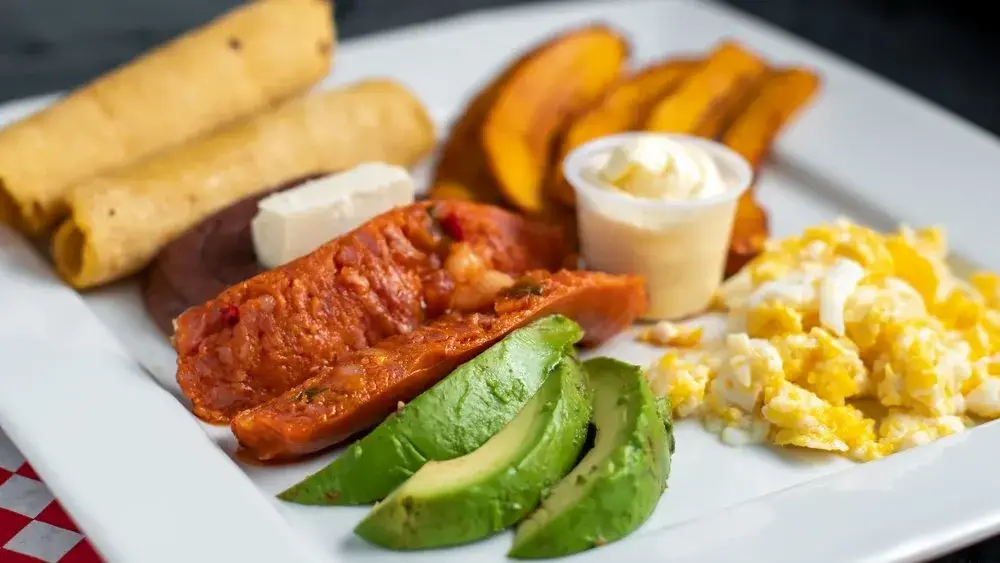
Honduran food cuisine is a diverse and delicious expression of the country’s geography, culture, and history. However, like any cuisine, it also has some health implications that depend on the ingredients, preparation methods, and consumption patterns of the people.
One of the positive aspects of Honduran food cuisine is the use of fresh and natural ingredients, many of which are native to the country and have been cultivated for centuries by the indigenous people.
Some of these ingredients are rich in nutrients, antioxidants, and fiber, such as corn, beans, plantains, and cacao, which are considered staple foods in Honduras. Other ingredients, such as fruits, vegetables, and seafood, provide vitamins, minerals, and phytochemicals that can prevent and fight diseases.
Honduran food also features a variety of spices, herbs, and sauces, such as aji, a spicy sauce made with chili peppers, onion, cilantro, and lime juice, that add flavor and health benefits to the dishes.
There are Also Negatives
However, Honduran food cuisine also has some negative aspects that can affect health and well-being. One of them is the high consumption of salt, sugar, and fat, which can increase the risk of hypertension, diabetes, and obesity.
- Salt is often added to soups, stews, and sauces, as well as to snacks, such as cancha and tostado.
- Sugar is often added to drinks, such as horchata and chicha, as well as to desserts, such as arroz con leche and pastel de plátano.
- Fat is often used to fry foods, such as empanadas, tajadas, and pescado frito, as well as to cook Honduran food, such as sopa de caracol and seco de chivo.
Another negative aspect of Honduran food cuisine is the low consumption of fiber, which can lead to constipation, diverticulitis, and colon cancer.
Fiber is found in whole grains, fruits, vegetables, and legumes, but many Hondurans prefer refined grains, such as white rice and white bread, and peel or discard the skins and seeds of fruits and vegetables.
A third negative aspect of Honduras’s cuisine is the potential contamination of food and water, which can cause diarrhea, dysentery, and typhoid. Contamination can occur due to poor hygiene, inadequate refrigeration, or environmental pollution.
Therefore, it is important to wash, peel, or cook food and water before consuming them, especially in rural areas or street markets.
References
- Together Women Rise: Customs & Cuisine of Honduras
- Chef’s Pencil: The 25 Most Popular Honduran Foods
- FAO: Food-Based Dietary Guidelines for Honduras
Honduras National Dish
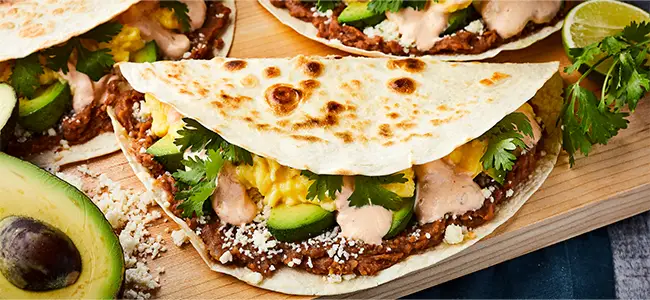
Honduras is a Central American country known for its vibrant culture and delicious cuisine. One of its most iconic dishes is the “baleadas,” a traditional Honduran street food that has gained recognition as the national dish.
Baleadas are made with thick flour tortillas that are filled with refried beans, cheese, and various toppings such as scrambled eggs, avocado, and Honduran cream. This flavorful and satisfying dish is enjoyed by locals and visitors alike, showcasing the rich culinary heritage of Honduras.
Honduran Cuisine Recipes to Try at Home
When it comes to Honduran cuisine, there’s no denying that traditional food is at the heart of it all. It is a rich blend of indigenous, European, and African culinary influences.
Honduran food culture is a reflection of the country’s diverse history and cultural heritage.
Honduran Food – Plato Típico

A Taste of Honduran Tradition
In the heart of Central America lies Honduras, a country with a culinary heritage deeply rooted in indigenous and Spanish influences. One dish that encapsulates the essence of Honduran daily life is the “Plato Típico.”
This traditional plate showcases the simplicity and richness of Honduran cuisine, featuring a harmonious combination of rice, beans, fried plantains, and a choice of protein. Let’s delve into the flavors that define the everyday dining experience in Honduras.
Honduran Food – Plato Típico Ingredients: (Serves 4)
- 2 cups cooked white rice
- 1 cup cooked red beans
- 2 ripe plantains, sliced
- 1 lb protein of choice (chicken, beef, or pork), cooked and seasoned
- 1 cup Honduran crema or sour cream
- 1 cup crumbled queso fresco (or feta cheese)
- 1 avocado, sliced
- 1 bunch fresh cilantro, chopped
- Salt and pepper to taste
Honduran Food – Plato Típico Recipe:
1. Preparing the Rice and Beans (Serves 4):
Ingredients:
- 2 cups cooked white rice
- 1 cup cooked red beans
- Cook white rice according to package instructions.
- In a separate pot, cook red beans until tender.
2. Sizzling Plantains (Serves 4):
Ingredients:
- 2 ripe plantains, sliced
- Peel and slice ripe plantains.
- In a pan, fry plantain slices until golden brown on both sides.
3. Protein Perfection (Serves 4):
Ingredients:
- 1 lb protein of choice (chicken, beef, or pork), cooked and seasoned
- Cook the chosen protein with preferred seasonings until fully cooked.
- Slice or shred the cooked protein for plating.
4. Assembling the Plato Típico (Serves 4):
Ingredients:
- 1 cup Honduran crema or sour cream
- 1 cup crumbled queso fresco (or feta cheese)
- 1 avocado, sliced
- 1 bunch fresh cilantro, chopped
- Salt and pepper to taste
- On individual plates, arrange a portion of cooked rice and red beans.
- Add the cooked protein alongside the rice and beans.
- Place fried plantain slices on the plate.
- Garnish with avocado slices, a dollop of Honduran crema, crumbled queso fresco, and a sprinkle of fresh cilantro.
- Season with salt and pepper to taste.
Nutritional Information:
(Per serving)
- Calories: 550 kcal
- Protein: 25g
- Carbohydrates: 65g
- Fat: 20g
- Fiber: 8g
- Sugar: 10g
Immerse yourself in the flavors of Honduras with Plato Típico, a delightful dish that mirrors the daily rhythm of Honduran life. Simple, yet bursting with vibrant tastes, this plate is a true representation of the warmth and authenticity embedded in Honduran cuisine.
Honduran Food – Yucca Con Chicharrón (Fried Yucca with Pork)

Unveiling the Honduran Culinary Tapestry
Journey with me to the heart of Honduras, a country where vibrant flavors are woven into every culinary creation. Among the many delights, “Yucca Con Chicharrón” stands out—a dish that captures the essence of Honduran street food.
Originating from the bustling markets and street corners, this savory combination of fried yucca and crispy chicharrón (pork) reflects the rich culinary history of this Central American gem.
Honduran Food – Yucca Con Chicharrón Ingredients: (Serves 4)
- 2 lbs yucca, peeled and cut into chunks
- 1 lb pork belly, sliced into bite-sized pieces
- 2 cups vegetable oil (for frying)
- 2 cloves garlic, minced
- 1 teaspoon cumin
- 1 teaspoon paprika
- Salt and pepper to taste
- Lime wedges for serving
Honduran Food – Yucca Con Chicharrón Recipe:
1. Preparing the Yucca (Serves 4):
Ingredients:
- 2 lbs yucca, peeled and cut into chunks
- Peel the yucca and cut it into manageable chunks.
- Rinse the yucca chunks under cold water to remove any surface starch.
2. Frying the Yucca (Serves 4):
Ingredients:
- 2 cups vegetable oil (for frying)
- Salt to taste
- Heat vegetable oil in a deep fryer or a heavy-bottomed pan to 350°F (175°C).
- Carefully add the yucca chunks to the hot oil and fry until golden brown and crispy.
- Remove the fried yucca and place it on a paper towel-lined plate.
- Season with salt to taste.
3. Chicharrón Magic (Serves 4):
Ingredients:
- 1 lb pork belly, sliced into bite-sized pieces
- 2 cloves garlic, minced
- 1 teaspoon cumin
- 1 teaspoon paprika
- Salt and pepper to taste
- In a separate pan, cook the sliced pork belly until crispy and golden brown.
- Add minced garlic, cumin, paprika, salt, and pepper for flavor.
- Stir the chicharrón until the pork is well-coated in the spices.
4. Bringing It Together (Serves 4):
Ingredients:
- Lime wedges for serving
- Arrange the fried yucca on a serving platter.
- Top it with the crispy chicharrón mixture.
- Serve with lime wedges for a zesty kick.
Nutritional Information:
(Per serving)
- Calories: 520 kcal
- Protein: 15g
- Carbohydrates: 45g
- Fat: 32g
- Fiber: 5g
- Sugar: 2g
Embark on a culinary adventure with Yucca Con Chicharrón, a delicious street food experience from Honduras that tantalizes your taste buds with the perfect blend of textures and flavors. This dish encapsulates the spirit of Honduran street cuisine, bringing the lively markets of Honduras to your own kitchen.
Honduran Food – Tortas De Elote (Corn Cakes)

Unraveling the Culinary Heritage of Honduras
Nestled in the heart of Central America, Honduras boasts a diverse culinary landscape steeped in tradition. Among the treasures is “Tortas De Elote,” a delightful dish with deep roots in Honduran kitchens.
These corn cakes are a testament to the country’s rich agricultural heritage, celebrating the abundance of maize, a staple in Honduran cuisine.
Honduran Food – Tortas De Elote Ingredients: (Serves 6)
- 2 cups fresh corn kernels (or frozen, thawed)
- 1 cup cornmeal
- 1/2 cup all-purpose flour
- 1/2 cup sugar
- 1/4 cup butter, melted
- 1/4 cup milk
- 2 eggs
- 1 teaspoon baking powder
- 1/2 teaspoon salt
- 1/4 teaspoon cinnamon
- Zest of one lime
- Butter or oil for cooking
- Honey or syrup for serving
Honduran Food – Tortas De Elote Recipe:
1. Preparing the Corn Mixture (Serves 6):
Ingredients:
- 2 cups fresh corn kernels (or frozen, thawed)
- 1/2 cup sugar
- 1/4 cup milk
- 1/4 cup butter, melted
- In a blender, combine fresh corn kernels, sugar, melted butter, and milk.
- Blend until smooth, creating a corn puree.
2. Mixing the Dry Ingredients (Serves 6):
Ingredients:
- 1 cup cornmeal
- 1/2 cup all-purpose flour
- 1 teaspoon baking powder
- 1/2 teaspoon salt
- 1/4 teaspoon cinnamon
- Zest of one lime
- In a large bowl, combine cornmeal, all-purpose flour, baking powder, salt, cinnamon, and lime zest.
3. Blending Wet and Dry (Serves 6):
Ingredients:
- Corn puree (from step 1)
- Dry ingredient mixture (from step 2)
- 2 eggs
- Pour the corn puree into the bowl with the dry ingredients.
- Add eggs to the mixture.
- Stir until well combined, creating a smooth batter.
4. Cooking the Corn Cakes (Serves 6):
Ingredients:
- Butter or oil for cooking
- Heat a skillet or griddle over medium heat and add butter or oil.
- Spoon portions of the batter onto the hot surface, creating small pancakes.
- Cook until bubbles form on the surface, then flip and cook the other side until golden brown.
5. Serving Up Sweetness (Serves 6):
Ingredients:
- Honey or syrup for serving
- Stack the Tortas De Elote on a plate.
- Drizzle with honey or syrup for a touch of sweetness.
- Serve warm and enjoy!
Nutritional Information:
(Per serving)
- Calories: 280 kcal
- Protein: 5g
- Carbohydrates: 50g
- Fat: 8g
- Fiber: 3g
- Sugar: 18g
Indulge in the sweet simplicity of Honduran cuisine with Tortas De Elote. These corn cakes offer a delightful blend of flavors, capturing the essence of Honduran agricultural abundance. Whether enjoyed as a breakfast treat or a dessert, these cakes are a true reflection of the warmth found in Honduran kitchens.
Honduran Food – Pollo Chuco: A Smoky Sensation

Diving into Honduran Culinary Traditions
Venture into the heart of Honduras with “Pollo Chuco,” a dish that embodies the rustic and robust flavors of Honduran cuisine. Originating from the bustling streets and vibrant markets, Pollo Chuco is a smoky sensation, showcasing the country’s love for grilled meats and bold spices.
Let’s embark on a culinary journey to explore the background and craft this mouthwatering dish.
Honduran Food – Pollo Chuco Ingredients: (Serves 4)
- 4 chicken leg quarters
- 1/4 cup achiote paste
- 1/4 cup vegetable oil
- 3 cloves garlic, minced
- 1 teaspoon ground cumin
- 1 teaspoon dried oregano
- 1 teaspoon smoked paprika
- 1 teaspoon salt
- 1/2 teaspoon black pepper
- Juice of 2 limes
- 1/4 cup Worcestershire sauce
- 2 tablespoons soy sauce
- Wooden skewers, soaked in water
Honduran Food – Pollo Chuco Recipe:
1. Marinating the Chicken (Serves 4):
Ingredients:
- 4 chicken leg quarters
- 1/4 cup achiote paste
- 1/4 cup vegetable oil
- 3 cloves garlic, minced
- In a bowl, mix achiote paste, vegetable oil, minced garlic, cumin, oregano, smoked paprika, salt, and black pepper.
- Rub the chicken leg quarters with the marinade, ensuring even coverage.
- Allow the chicken to marinate for at least 2 hours, or preferably overnight, in the refrigerator.
2. Preparing the Grilling Sauce (Serves 4):
Ingredients:
- Juice of 2 limes
- 1/4 cup Worcestershire sauce
- 2 tablespoons soy sauce
- In a small bowl, combine lime juice, Worcestershire sauce, and soy sauce.
- Set aside to use as a basting sauce during grilling.
3. Grilling the Pollo Chuco (Serves 4):
Ingredients:
- Marinated chicken (from step 1)
- Grilling sauce (from step 2)
- Wooden skewers, soaked in water
- Preheat the grill to medium-high heat.
- Thread the marinated chicken onto soaked wooden skewers.
- Grill the chicken, turning and basting with the grilling sauce, until fully cooked and charred, approximately 20-25 minutes.
4. Serving the Smoky Sensation (Serves 4):
- Arrange the grilled Pollo Chuco on a platter.
- Serve hot with your choice of side dishes, such as rice, grilled vegetables, or tortillas.
Nutritional Information:
(Per serving)
- Calories: 450 kcal
- Protein: 28g
- Carbohydrates: 8g
- Fat: 35g
- Fiber: 2g
- Sugar: 2g
Transport your taste buds to the lively streets of Honduras with Pollo Chuco, a smoky sensation that encapsulates the bold flavors of Honduran grilling culture. Whether enjoyed at a local eatery or prepared at home, this dish promises a tantalizing experience that captures the essence of Honduras.
Honduran Food – Pollo En Crema (Chicken in Creamy Sauce)

Exploring the Culinary Heritage of Honduras
Let’s delve into the comforting embrace of Honduran cuisine with “Pollo En Crema,” a dish that mirrors the warmth and richness of the country’s culinary traditions.
Originating from the diverse landscapes of Honduras, this creamy chicken delight showcases the fusion of indigenous ingredients and Spanish influences that define the country’s gastronomic tapestry.
Honduran Food – Pollo En Crema Ingredients: (Serves 4)
- 4 bone-in, skin-on chicken thighs
- 1 onion, finely chopped
- 2 bell peppers, thinly sliced
- 3 cloves garlic, minced
- 1 cup heavy cream
- 1 cup chicken broth
- 1 teaspoon ground cumin
- 1 teaspoon dried oregano
- 1/2 teaspoon paprika
- Salt and pepper to taste
- 2 tablespoons vegetable oil
- Fresh cilantro for garnish
- Lime wedges for serving
Honduran Food – Pollo En Crema Recipe:
1. Preparing the Chicken (Serves 4):
Ingredients:
- 4 bone-in, skin-on chicken thighs
- Salt and pepper to taste
- Season the chicken thighs with salt and pepper.
- In a large skillet, heat vegetable oil over medium-high heat.
- Brown the chicken thighs on both sides until golden. Remove from the skillet and set aside.
2. Sautéing Aromatics (Serves 4):
Ingredients:
- 1 onion, finely chopped
- 2 bell peppers, thinly sliced
- 3 cloves garlic, minced
- In the same skillet, sauté chopped onion, sliced bell peppers, and minced garlic until softened and fragrant.
3. Creating the Creamy Sauce (Serves 4):
Ingredients:
- Browned chicken thighs (from step 1)
- Sautéed aromatics (from step 2)
- 1 cup heavy cream
- 1 cup chicken broth
- 1 teaspoon ground cumin
- 1 teaspoon dried oregano
- 1/2 teaspoon paprika
- Return the browned chicken thighs to the skillet.
- Pour in heavy cream and chicken broth.
- Add ground cumin, dried oregano, and paprika. Stir to combine.
4. Simmering to Perfection (Serves 4):
Ingredients:
- Fresh cilantro for garnish
- Lime wedges for serving
- Bring the mixture to a simmer, then reduce the heat to low.
- Cover and simmer for 20-25 minutes or until the chicken is cooked through.
- Garnish with fresh cilantro before serving.
- Serve hot with lime wedges on the side.
Nutritional Information:
(Per serving)
- Calories: 480 kcal
- Protein: 25g
- Carbohydrates: 10g
- Fat: 38g
- Fiber: 2g
- Sugar: 4g
Immerse yourself in the creamy indulgence of Honduran comfort with Pollo En Crema. This dish not only tantalizes your taste buds but also offers a glimpse into the heart of Honduran culinary traditions. Whether enjoyed at a local eatery or recreated in your own kitchen, this flavorful journey promises a taste of Honduras’ delicious embrace.
Honduran Food – Sopa De Mondongo (Tripe Soup)

History and Background: A Culinary Journey through Honduras
Honduran cuisine is a vibrant tapestry of flavors, reflecting the country’s diverse cultural influences. Sopa De Mondongo, a traditional dish, holds a special place in the hearts and stomachs of locals.
Originating from the coastal regions, this hearty tripe soup has been cherished for generations, showcasing the fusion of Indigenous, African, and Spanish culinary traditions.
Honduran Food – Sopa De Mondongo Ingredients: A Symphony of Honduran Flavors
- 1 lb beef tripe, cleaned and sliced
- 1 lb beef honeycomb tripe, cleaned and sliced
- 1 lb beef feet, split
- 1 large onion, finely chopped
- 3 cloves garlic, minced
- 2 carrots, peeled and diced
- 2 plantains, peeled and sliced
- 2 chayotes, peeled and diced
- 1 green bell pepper, diced
- 1 red bell pepper, diced
- 1 cup celery, chopped
- 1 cup cilantro, chopped
- 2 tomatoes, diced
- 1 cup yucca, peeled and diced
- 1 cup corn kernels
- 2 potatoes, peeled and diced
- 1 tablespoon annatto seeds
- 1 teaspoon ground cumin
- Salt and pepper to taste
Honduran Food – Sopa De Mondongo Ingredients: A Symphony of Honduran Flavors Recipe: A Flavorful Journey into Honduran Cuisine (Serves 6)
Preparing Ingredients:
- Clean and Slice Tripe:
- Rinse beef tripe and honeycomb tripe thoroughly.
- Slice the tripe into bite-sized pieces.
- Prep Vegetables:
- Chop onions, garlic, carrots, plantains, chayotes, green and red bell peppers, celery, cilantro, tomatoes, yucca, and potatoes.
Cooking the Honduran Sopa De Mondongo:
- Boil Tripe and Beef Feet:
- In a large pot, combine tripe, honeycomb tripe, and beef feet.
- Cover with water and bring to a boil.
- Simmer until tripe is tender.
- Infuse Flavor:
- In a separate pan, heat annatto seeds in oil until it releases color. Discard seeds.
- Sauté onions and garlic in annatto-infused oil until golden.
- Building the Soup:
- Add sautéed onions and garlic to the pot of tripe.
- Incorporate carrots, plantains, chayotes, bell peppers, celery, cilantro, tomatoes, yucca, corn, and potatoes.
- Season with cumin, salt, and pepper.
- Simmer to Perfection:
- Allow the soup to simmer until vegetables are tender.
- Adjust seasoning to taste.
- Serve and Enjoy:
- Ladle the Sopa De Mondongo into bowls.
- Garnish with additional cilantro, if desired.
Estimated Cooking Time: 2 hours
Nutritional Information (per serving):
- Calories: 350
- Protein: 25g
- Carbohydrates: 40g
- Fat: 12g
- Fiber: 8g
Embark on this culinary adventure and savor the rich history and flavors of Honduras with a warm bowl of Sopa De Mondongo. It’s a delicious homage to the country’s culinary heritage that will transport you to the heart of Central America.
Honduran Food – Salvadoreñas (Stuffed with Cheese and Avocado)

History and Background
Honduran cuisine is a vibrant tapestry of flavors influenced by indigenous, Spanish, African, and Caribbean culinary traditions. The dish Salvadoreñas, featuring delightful stuffed pockets of cheese and avocado, is a popular street food in Honduras.
Originating from the heart of Central America, this snack captures the essence of Honduran street food culture. It beautifully blends local ingredients with a touch of international influence, resulting in a mouthwatering treat that has become a favorite among locals and tourists alike.
Honduran Food – Salvadoreñas Ingredients
- 2 cups masa harina (corn flour)
- 1 1/2 cups warm water
- 1 cup shredded queso fresco (fresh cheese)
- 1 ripe avocado, sliced
- 1/2 teaspoon salt
- Vegetable oil (for frying)
Honduran Food – Salvadoreñas Recipe
1. Prepare the Dough
- In a large bowl, combine masa harina and salt.
- Gradually add warm water, mixing until a soft, pliable dough forms.
- Knead the dough for about 5 minutes until smooth.
2. Form the Dough Balls
- Take a golf ball-sized portion of the dough and roll it into a smooth ball.
- Flatten the ball into a disc shape with your hands, creating a pocket for the filling.
3. Add Cheese and Avocado
- Place a slice of avocado and a tablespoon of shredded queso fresco into the center of each dough disc.
- Carefully seal the edges, ensuring the filling is enclosed.
4. Cook the Salvadoreñas
- Heat vegetable oil in a frying pan over medium heat.
- Fry each stuffed pocket until golden brown on both sides, usually 3-4 minutes per side.
- Remove from the pan and drain excess oil on paper towels.
5. Serve and Enjoy
- Let them cool slightly before serving.
- Pair with your favorite salsa or hot sauce.
Serving: This recipe makes approximately 12 Salvadoreñas, serving 4 people.
Cooking Time: Approximately 30 minutes
Nutritional Information (per serving):
- Calories: 250
- Protein: 7g
- Fat: 12g
- Carbohydrates: 30g
- Fiber: 5g
Give this Honduran delicacy a try and transport your taste buds to the bustling streets of Central America!
Honduran Food – Pan De Coco (Sweet Coconut Bread)

History and Background
Honduran cuisine, a delightful blend of indigenous and Spanish influences, unfolds a story of flavors unique to Central America. In the coastal regions, the beloved Pan De Coco emerges as a sweet testament to the abundance of coconuts.
Originating from the vibrant coastal areas of Honduras, this delightful bread showcases the country’s tropical essence and the fusion of colonial and local culinary traditions.
Honduran Food – Pan De Coco Ingredients
- 3 cups all-purpose flour
- 1 cup grated coconut (fresh or desiccated)
- 1 cup coconut milk
- 1/2 cup sugar
- 1/4 cup unsalted butter, melted
- 2 teaspoons active dry yeast
- 1/2 teaspoon salt
- 1 egg (for egg wash)
- Additional grated coconut for topping
Honduran Food – Pan De Coco Recipe
1. Activate the Yeast
- In a bowl, mix the active dry yeast with a tablespoon of sugar and warm water. Let it sit for 5-10 minutes until it becomes frothy.
2. Combine Dry Ingredients
- In a large bowl, mix the flour, grated coconut, sugar, and salt.
- Add the activated yeast, melted butter, and coconut milk. Combine until a dough forms.
3. Knead the Dough
- On a floured surface, knead the dough for 8-10 minutes until it’s smooth and elastic.
4. Let the Dough Rise
- Place the dough in a greased bowl, cover it with a cloth, and let it rise in a warm place for 1-2 hours, or until it doubles in size.
5. Shape the Bread
- Punch down the risen dough and shape it into a round loaf.
- Place the loaf on a baking sheet lined with parchment paper.
6. Final Rise and Egg Wash
- Cover the shaped dough and let it rise for another 30-45 minutes.
- Preheat your oven to 350°F (180°C).
- Beat the egg and brush it over the top of the bread. Sprinkle additional grated coconut on top.
7. Bake
- Bake the Pan De Coco for 25-30 minutes or until golden brown and sounds hollow when tapped on the bottom.
8. Cool and Enjoy
- Allow the bread to cool before slicing. Serve and savor the tropical sweetness!
Serving: This recipe makes one Pan De Coco, serving 8-10 people.
Cooking Time: Approximately 2 hours (including rising time)
Nutritional Information (per serving):
- Calories: 280
- Protein: 5g
- Fat: 10g
- Carbohydrates: 40g
- Fiber: 2g
Transport your taste buds to the sun-soaked beaches of Honduras with this Pan De Coco, a delightful symphony of coconut and sweetness!
Honduran Food – Hojuelas (Crispy Pastries)

History and Background
Honduran cuisine unfolds its culinary treasures, and among them, Hojuelas stand out as delightful, crispy pastries. Originating from the heart of Honduras, these treats have a deep-rooted history in the region’s festive celebrations and family gatherings. Traditionally enjoyed during holidays, Hojuelas are a symbol of togetherness and the joyous spirit of Honduran culture.
Honduran Food – Hojuelas Ingredients
- 2 cups all-purpose flour
- 1/4 cup sugar
- 1/2 teaspoon baking powder
- 1/4 teaspoon salt
- 2 tablespoons butter, melted
- 2/3 cup milk
- Vegetable oil (for frying)
- Powdered sugar (for dusting)
Honduran Food – Hojuelas Recipe
1. Mix Dry Ingredients
- In a bowl, combine the all-purpose flour, sugar, baking powder, and salt.
2. Add Wet Ingredients
- Pour in the melted butter and milk, stirring until a soft dough forms.
3. Knead the Dough
- On a floured surface, knead the dough for 5-7 minutes until smooth.
4. Roll and Cut
- Roll out the dough to about 1/4-inch thickness.
- Cut the dough into small rectangles or diamond shapes.
5. Heat the Oil
- In a deep pan, heat vegetable oil over medium-high heat.
6. Fry the Hojuelas
- Carefully place the cut pieces into the hot oil, frying until golden brown on both sides, approximately 2 minutes per side.
7. Drain and Dust
- Remove the Hojuelas from the oil and drain excess oil on paper towels.
- Dust the pastries with powdered sugar while they’re still warm.
8. Serve and Enjoy
- Allow the Hojuelas to cool slightly before serving. Enjoy the crispiness!
Serving: This recipe makes approximately 20 Hojuelas, serving 6-8 people.
Cooking Time: Approximately 30 minutes
Nutritional Information (per serving):
- Calories: 120
- Protein: 2g
- Fat: 3g
- Carbohydrates: 20g
- Sugar: 5g
Savor the simplicity and joy of Honduran traditions with these Hojuelas – crispy pastries that bring a taste of celebration to your table!
Honduran Food – Guacho (A Seafood Stew)

History and Background
Honduran cuisine takes us on a maritime adventure with Guacho, a seafood stew deeply rooted in coastal traditions. Originating from the bountiful waters of Honduras, this dish reflects the fusion of indigenous and Spanish influences.
Celebrated for its rich flavors and diverse seafood medley, Guacho stands as a testament to the coastal heritage and culinary creativity of the region.
Honduran Food – Guacho Ingredients
- 1 cup rice
- 1 pound mixed seafood (shrimp, fish, squid, mussels)
- 1 cup coconut milk
- 1 onion, finely chopped
- 2 bell peppers, diced
- 2 tomatoes, chopped
- 3 cloves garlic, minced
- 1/4 cup fresh cilantro, chopped
- 2 tablespoons vegetable oil
- 4 cups fish or seafood broth
- 1 teaspoon ground cumin
- Salt and pepper to taste
- Lime wedges for serving
Honduran Food – Guacho Recipe
1. Prepare the Rice
- Rinse the rice under cold water until the water runs clear.
- Cook the rice according to package instructions. Set aside.
2. Sauté Aromatics
- In a large pot, heat vegetable oil over medium heat.
- Sauté the chopped onion, garlic, and bell peppers until softened.
3. Add Tomatoes and Cumin
- Stir in the chopped tomatoes and ground cumin, cooking until the tomatoes break down.
4. Introduce Seafood
- Add the mixed seafood to the pot, stirring gently.
- Pour in the fish or seafood broth and coconut milk.
5. Simmer
- Bring the stew to a simmer and let it cook for 15-20 minutes until the seafood is cooked through.
6. Season and Garnish
- Season the Guacho with salt and pepper to taste.
- Stir in fresh cilantro, reserving some for garnish.
7. Serve Over Rice
- Spoon the seafood stew over the cooked rice.
- Garnish with additional cilantro and serve with lime wedges.
8. Enjoy the Coastal Delight
- Dive into the flavors of Guacho, savoring the rich combination of seafood and aromatic spices.
Serving: This recipe makes approximately 4 servings.
Cooking Time: Approximately 45 minutes
Nutritional Information (per serving):
- Calories: 450
- Protein: 25g
- Fat: 15g
- Carbohydrates: 50g
- Fiber: 3g
Indulge in the coastal warmth of Honduras with Guacho, a seafood stew that brings the taste of the sea to your table!
Honduran Food – Frijoles Fritos (Fried Beans)

History and Background
Honduran cuisine invites us to savor the simple yet soulful Frijoles Fritos, a staple found in many homes across the country. Originating from the heart of Central America, this dish reflects the essence of traditional Honduran comfort food.
Beans have been a dietary cornerstone for centuries, and Frijoles Fritos showcase the art of transforming humble ingredients into a flavorful and satisfying dish.
Honduran Food – Frijoles Fritos Ingredients
- 2 cups cooked red or black beans
- 1/4 cup vegetable oil
- 1 onion, finely chopped
- 2 cloves garlic, minced
- 1 teaspoon ground cumin
- 1 teaspoon paprika
- Salt and pepper to taste
- Fresh cilantro for garnish
Honduran Food – Frijoles Fritos Recipe
1. Prepare the Beans
- If using canned beans, drain and rinse them. If using dry beans, cook them until tender.
2. Sauté Aromatics
- In a skillet, heat vegetable oil over medium heat.
- Add finely chopped onion and minced garlic, sautéing until golden and fragrant.
3. Add Beans and Spices
- Introduce the cooked beans to the skillet, stirring to coat them with the aromatic mixture.
- Sprinkle ground cumin, paprika, salt, and pepper over the beans.
4. Mash and Cook
- With a potato masher or the back of a spoon, gently mash some of the beans.
- Continue cooking, stirring occasionally, until the beans are heated through and flavors meld.
5. Garnish and Serve
- Sprinkle fresh cilantro over the Frijoles Fritos for a burst of freshness.
- Serve hot as a side dish or enjoy with rice and tortillas.
Serving: This recipe makes approximately 4 servings.
Cooking Time: Approximately 20 minutes
Nutritional Information (per serving):
- Calories: 180
- Protein: 7g
- Fat: 8g
- Carbohydrates: 20g
- Fiber: 6g
Savor the heartwarming simplicity of Honduras with Frijoles Fritos, a dish that captures the essence of comfort and tradition!
Honduran Food – Rosquillas: A Sweet Ending

History and Background
Honduran cuisine wraps up its delightful journey with Rosquillas, a sweet treat that traces its roots to the heart of Central America. Originating from Honduras, Rosquillas are a beloved dessert enjoyed during special occasions and family gatherings.
These doughnut-like delights, coated in sweet glaze or sprinkled with sugar, showcase the country’s love for simple yet satisfying sweets.
Honduran Food – Rosquillas: A Sweet Ending Ingredients
- 2 cups all-purpose flour
- 1/2 cup sugar
- 1/4 cup unsalted butter, melted
- 2 eggs
- 1 teaspoon baking powder
- 1/2 teaspoon vanilla extract
- Pinch of salt
- Oil for frying
- For the Glaze:
- 1 cup powdered sugar
- 2 tablespoons milk
- 1/2 teaspoon vanilla extract
Honduran Food – Rosquillas: A Sweet Ending Recipe
1. Prepare the Dough
- In a bowl, mix together the flour, sugar, baking powder, and a pinch of salt.
- Add melted butter, eggs, and vanilla extract to the dry ingredients, combining until a soft dough forms.
2. Shape the Rosquillas
- Divide the dough into small portions and roll them into ropes.
- Shape the ropes into circles, connecting the ends to form the classic Rosquilla shape.
3. Fry the Rosquillas
- Heat oil in a deep pan over medium heat.
- Carefully place the shaped Rosquillas into the hot oil, frying until golden brown on both sides.
4. Make the Glaze
- In a separate bowl, whisk together powdered sugar, milk, and vanilla extract until smooth.
5. Glaze the Rosquillas
- Once the Rosquillas are fried and still warm, dip them into the glaze, ensuring an even coating.
6. Serve and Enjoy
- Allow the glaze to set slightly before serving these delightful sweet treats.
Serving: This recipe makes approximately 12 Rosquillas, serving 4-6 people.
Cooking Time: Approximately 30 minutes
Nutritional Information (per serving):
- Calories: 200
- Protein: 3g
- Fat: 6g
- Carbohydrates: 35g
- Sugar: 18g
Indulge in the sweet conclusion of a Honduran meal with Rosquillas, capturing the essence of tradition and joy in every bite!
Honduran Food – Tortas De Carne

History and Background
Honduran cuisine opens a doorway to hearty delights, and among them, Tortas De Carne stand as a testament to the country’s rich culinary heritage. Originating from the bustling streets and warm kitchens of Honduras, these meat-filled delights have roots in Spanish and indigenous influences.
Whether enjoyed as a quick street food snack or a heartier meal, Tortas De Carne capture the essence of Honduran comfort food.
Honduran Food – Tortas De Carne Ingredients
- 1 pound ground beef
- 1 onion, finely chopped
- 2 cloves garlic, minced
- 1 bell pepper, diced
- 1 tomato, chopped
- 1/2 cup tomato sauce
- 1 teaspoon ground cumin
- 1 teaspoon dried oregano
- Salt and pepper to taste
- 4 bolillo rolls or small baguettes
- Lettuce and tomato slices for garnish
- Optional toppings: hot sauce, mayonnaise, or avocado slices
Honduran Food – Tortas De Carne Recipe
1. Cook the Meat
- In a skillet over medium heat, cook the ground beef until browned.
- Add chopped onions, minced garlic, and diced bell pepper. Sauté until vegetables are tender.
2. Add Tomatoes and Sauce
- Stir in chopped tomatoes, tomato sauce, ground cumin, dried oregano, salt, and pepper.
- Simmer the mixture for 10-15 minutes until flavors meld.
3. Prepare the Bolillo Rolls
- Cut the bolillo rolls or small baguettes in half lengthwise.
- Hollow out some of the bread from the center to create space for the filling.
4. Assemble the Tortas
- Spoon the meat mixture into the hollowed-out rolls.
- Top with lettuce and tomato slices. Add optional toppings according to your preference.
5. Serve and Enjoy
- Close the tortas and press them gently.
- Serve immediately, savoring the flavors of Honduras in each bite.
Serving: This recipe makes approximately 4 Tortas De Carne, serving 2-4 people.
Cooking Time: Approximately 30 minutes
Nutritional Information (per serving):
- Calories: 400
- Protein: 20g
- Fat: 15g
- Carbohydrates: 45g
- Fiber: 5g
Treat your taste buds to the savory delights of Honduras with Tortas De Carne, a satisfying blend of seasoned beef nestled in a warm, crusty roll!
Honduran Food – Elotes Locos

History and Background
Honduran cuisine takes a flavorful turn with Elotes Locos, a popular street food delight. Originating from the vibrant street markets of Honduras, this dish is a unique take on the traditional Mexican street corn.
Elotes Locos, meaning “crazy corn,” brings together the bold flavors of Central America, offering a tantalizing experience for those seeking a taste of Honduran street culture.
Honduran Food – Elotes Locos Ingredients
- 4 ears of fresh corn, husked
- 1/2 cup mayonnaise
- 1/4 cup sour cream
- 1 cup crumbled queso fresco (fresh cheese)
- 1 teaspoon chili powder
- 1/2 cup chopped fresh cilantro
- 4 lime wedges
Honduran Food – Elotes Locos Recipe
1. Grill the Corn
- Preheat the grill to medium-high heat.
- Grill the corn, turning occasionally, until it gets a nice char, usually 10-12 minutes.
2. Prepare the Sauce
- In a small bowl, mix together mayonnaise and sour cream.
- Set aside.
3. Coat the Corn
- Once the corn is grilled, brush each ear with the mayonnaise and sour cream mixture.
- Roll the coated corn in crumbled queso fresco, ensuring an even layer.
4. Season and Garnish
- Sprinkle chili powder over the corn for a hint of heat.
- Garnish with chopped cilantro and serve each Elote Loco with a lime wedge.
5. Serve and Enjoy
- Dig into the irresistible flavors of Elotes Locos, relishing the combination of creamy, cheesy, and spicy goodness.
Serving: This recipe makes 4 servings.
Cooking Time: Approximately 15 minutes
Nutritional Information (per serving):
- Calories: 250
- Protein: 7g
- Fat: 15g
- Carbohydrates: 25g
- Fiber: 3g
Experience the lively street food culture of Honduras with Elotes Locos, a perfect blend of grilled corn and bold, zesty toppings!
Honduran Food – Yuca Con Chicharrón

History and Background
Honduran cuisine introduces us to the soul-warming dish, Yuca Con Chicharrón. Rooted in the heart of Central America, this dish mirrors the rich tapestry of Honduran culinary traditions.
Combining the starchy goodness of yuca with the savory crunch of chicharrón (fried pork), this comforting meal has been a staple in Honduran households for generations, embodying the warmth and heartiness of the region.
Honduran Food – Yuca Con Chicharrón Ingredients
- 2 lbs yuca (cassava), peeled and cut into chunks
- 1 lb chicharrón (fried pork belly or pork rinds), chopped
- 1/2 cup vegetable oil
- 1 onion, finely chopped
- 2 cloves garlic, minced
- 1 bell pepper, diced
- 1 tomato, chopped
- 1/2 teaspoon ground cumin
- Salt and pepper to taste
- Fresh cilantro for garnish
Honduran Food – Yuca Con Chicharrón Recipe
1. Prepare the Yuca
- Peel the yuca and cut it into bite-sized chunks.
- Rinse the yuca under cold water to remove excess starch.
2. Boil the Yuca
- In a large pot, bring salted water to a boil.
- Add the yuca chunks and cook until fork-tender, about 20-25 minutes.
3. Fry the Chicharrón
- In a separate pan, heat vegetable oil over medium heat.
- Fry the chopped chicharrón until golden and crispy.
4. Sauté Aromatics
- In another pan, sauté chopped onions, minced garlic, and diced bell peppers until softened.
- Add chopped tomatoes, ground cumin, salt, and pepper. Cook until tomatoes break down.
5. Combine Yuca and Chicharrón
- Drain the boiled yuca and add it to the sautéed aromatics.
- Mix in the fried chicharrón, tossing everything together.
6. Garnish and Serve
- Garnish the Yuca Con Chicharrón with fresh cilantro.
- Serve hot and enjoy this comforting Honduran dish.
Serving: This recipe makes approximately 4 servings.
Cooking Time: Approximately 45 minutes
Nutritional Information (per serving):
- Calories: 450
- Protein: 15g
- Fat: 25g
- Carbohydrates: 45g
- Fiber: 5g
Indulge in the flavors of Honduras with Yuca Con Chicharrón, a dish that brings together the best of hearty and savory comfort food!
Honduran Food – Pupusas

History and Background
Honduran cuisine beckons us into a world of handmade perfection with Pupusas. Originating from the indigenous Pipil culture of El Salvador, Pupusas have seamlessly woven themselves into the culinary fabric of Honduras.
These stuffed corn tortillas, filled with savory delights, reflect the historical fusion of indigenous and Spanish influences that define the rich tapestry of Central American gastronomy.
Honduran Food – Pupusas Ingredients
- 2 cups masa harina (corn flour)
- 1 1/2 cups warm water
- 1 cup refried beans
- 1 cup shredded queso fresco (fresh cheese)
- 1 cup cooked and seasoned ground pork
- 1 cup curtido (cabbage slaw)
- Vegetable oil for cooking
Honduran Food – Pupusas Recipe
1. Prepare the Dough
- In a large bowl, combine masa harina with warm water to form a soft, pliable dough.
- Knead the dough for a few minutes until smooth.
2. Create Filling Options
- Divide the dough into golf ball-sized portions.
- Flatten each ball, creating a small well in the center for the filling.
3. Fill and Seal
- Spoon a tablespoon of refried beans, shredded cheese, or seasoned ground pork into the well of each flattened dough portion.
- Carefully seal the edges, ensuring the filling is enclosed.
4. Shape the Pupusas
- Gently pat each filled dough ball into a disc, about 4-5 inches in diameter.
5. Cook the Pupusas
- Heat a griddle or skillet over medium heat.
- Brush the surface with vegetable oil and cook each pupusa for 2-3 minutes on each side until golden brown.
6. Serve with Curtido
- Accompany the Pupusas with a side of curtido, a tangy cabbage slaw.
7. Enjoy the Handheld Delight
- Serve hot, allowing the melted cheese and flavorful fillings to delight your taste buds.
Serving: This recipe makes approximately 12 Pupusas, serving 4-6 people.
Cooking Time: Approximately 30 minutes
Nutritional Information (per serving):
- Calories: 300
- Protein: 10g
- Fat: 8g
- Carbohydrates: 50g
- Fiber: 5g
Dive into the authentic flavors of Honduras with Pupusas, a handheld delight that encapsulates the heart and soul of Central American street food!
Honduran Food – Cocido De Mariscos (Seafood Stew)

History and Background
Honduran cuisine takes us on a coastal journey with Cocido De Mariscos, a flavorful seafood stew deeply rooted in the maritime traditions of the region. Originating from the coastal areas of Honduras, this dish reflects the abundance of fresh seafood and the culinary influence of Spanish and indigenous flavors.
Cocido De Mariscos is a celebration of coastal life, bringing together the vibrant tastes of the sea.
Honduran Food – Cocido De Mariscos Ingredients
- 1 pound shrimp, peeled and deveined
- 1 pound fish fillets, cut into chunks
- 1/2 pound squid, cleaned and sliced
- 1/2 pound mussels, cleaned and debearded
- 1 onion, finely chopped
- 3 cloves garlic, minced
- 1 bell pepper, diced
- 2 tomatoes, chopped
- 1/2 cup tomato sauce
- 1/4 cup fresh cilantro, chopped
- 1 teaspoon ground cumin
- Salt and pepper to taste
- 4 cups fish or seafood broth
- 2 tablespoons vegetable oil
- Lime wedges for serving
Honduran Food – Cocido De Mariscos Recipe
1. Sauté Aromatics
- In a large pot, heat vegetable oil over medium heat.
- Sauté chopped onions, minced garlic, and diced bell peppers until softened.
2. Add Tomatoes and Sauce
- Stir in chopped tomatoes and tomato sauce, cooking until the tomatoes break down.
- Add ground cumin, salt, and pepper, letting the flavors meld.
3. Introduce Seafood
- Add shrimp, fish fillets, squid, and mussels to the pot, stirring gently.
- Pour in fish or seafood broth, ensuring the seafood is immersed.
4. Simmer
- Bring the stew to a simmer and let it cook for 15-20 minutes until the seafood is cooked through.
5. Season and Garnish
- Season Cocido De Mariscos with additional salt and pepper to taste.
- Stir in fresh cilantro and let it simmer for an additional 5 minutes.
6. Serve with Lime Wedges
- Ladle the seafood stew into bowls and serve hot.
- Accompany with lime wedges for a burst of citrus freshness.
Serving: This recipe makes approximately 4 servings.
Cooking Time: Approximately 30 minutes
Nutritional Information (per serving):
- Calories: 350
- Protein: 40g
- Fat: 12g
- Carbohydrates: 20g
- Fiber: 3g
Indulge in the coastal flavors of Honduras with Cocido De Mariscos, a seafood stew that brings the taste of the sea to your table!
Honduran Cuisine – Baleadas
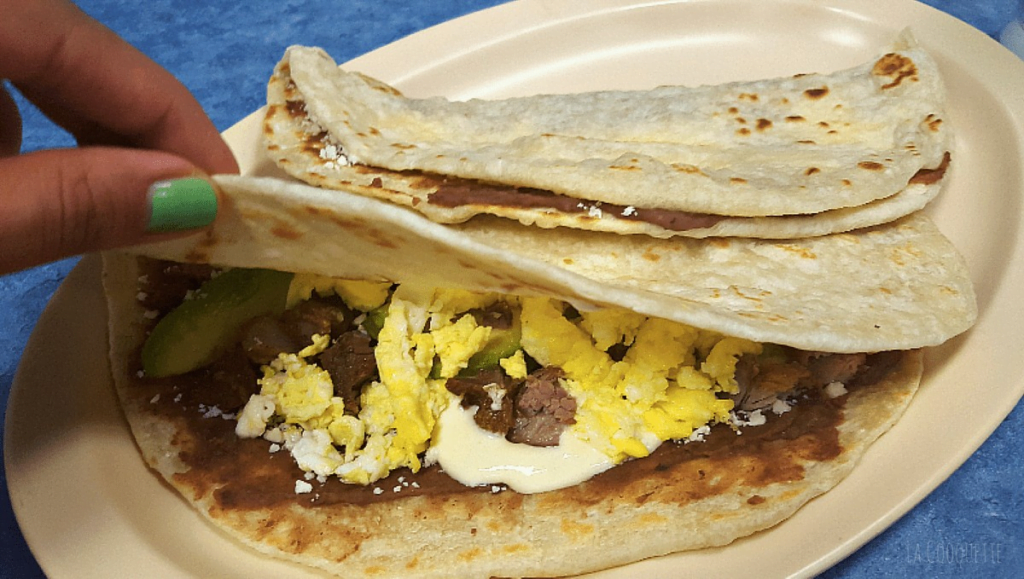
Background and History of Baleadas
Baleadas are a traditional Honduran street food that consists of thick wheat tortillas filled with refried beans, cheese, and other toppings. Baleadas are believed to have originated on the northern coast of Honduras, where wheat flour was introduced by Italian immigrants who worked for the Standard Fruit Company, a banana-growing empire.
There are two theories about the origin of the name baleada:
- One says that it is named after the visual similarities between beans and bullets (bala in Spanish).
- The other says that a tortilla-making woman was shot with several bullets, but recovered, and started to make tortillas again, so the workers used to say they are going to the baleada (the shot woman)
Honduran Cuisine – Baleadas Ingredients
To make baleadas, you will need the following ingredients:
For the tortillas
- 2 cups of all-purpose flour
- 1 cup of water
- 1/2 cup of vegetable oil
- 1 egg
- 1/2 teaspoon of salt
Filling
- 2 cups of refried beans, warmed
- 1 avocado, sliced
- 1/2 cup of crumbled queso fresco (fresh white cheese)
- 1/4 cup of crema fresca (fresh cream)
Optional toppings:
- Scrambled eggs
- Chorizo
- Red onion
- Cilantro
- Aji (spicy sauce)
Honduran Cuisine – Baleadas Recipe
The steps to make baleadas are as follows:
- To make the tortillas, mix the flour, water, oil, egg, and salt in a large bowl.
- Knead the dough until smooth and no longer sticky.
- Form it into eight balls and let them rest for 20 minutes.
- Roll out each ball into a thin circle and cook on a hot skillet for about a minute per side, until lightly browned and puffed.
- Keep them warm in a cloth or a tortilla warmer.
Assembling the Baleadas
- To assemble the baleadas, spread about 1/4 cup of refried beans on each tortilla.
- Sprinkle some cheese and drizzle some crema on top.
- Add any optional toppings you like, such as eggs, chorizo, onion, cilantro, or aji.
- Fold the tortillas in half.
- Enjoy your baleadas
Honduran Cuisine – Ceviche

This is a dish of raw fish or seafood marinated in citrus juice and spices, usually served cold as an appetizer or a main course. Ceviche is popular in many Latin American countries, especially along the Pacific coast, where fresh fish and seafood are abundant.
The history of ceviche is not very clear, but some sources suggest that it originated in Peru, where it is considered a national dish and a cultural heritage. Ceviche may have evolved from an ancient dish of the Incas, who seasoned their fish with salt and chili peppers and cured it in the juice of tumbo, a relative of the passion fruit.
However, other sources claim that ceviche came from Ecuador, where it was made with fish, lemon, onion, and cilantro.
The name of the dish may come from the Spanish word escabeche, which means pickled, or from the Quechua word siwichi, which means fresh fish. The spelling of the dish varies from country to country, but the most common one is ceviche with a “v”.
Honduran Cuisine – Ceviche Ingredients
To make Honduran ceviche, you will need the following ingredients:
- 2 pounds of fresh, skinless snapper, bass, halibut, or other ocean fish fillets, cut into 1/2-inch pieces
- 1 1/2 cups of fresh lime juice
- 1 medium white onion, chopped into 1/2-inch pieces
- 2 medium-large tomatoes, chopped into 1/2-inch pieces
- Fresh hot green chilies (2 to 3 serranos or 1 to 2 jalapeños), stemmed, seeded, and finely chopped
- 1/3 cup of chopped cilantro, plus a few leaves for garnish
- 1/3 cup of chopped pitted green olives
- 2 tablespoons of extra-virgin olive oil (optional)
- Salt and pepper to taste
- 3 tablespoons of fresh orange juice or 1/2 teaspoon of sugar
- 1 large or 2 small ripe avocados, peeled, pitted, and diced
- Tortilla chips, tostadas, or saltine crackers, for serving
Honduran Cuisine – Ceviche Recipe
The steps to make Honduran ceviche are as follows:
- In a large glass or stainless steel bowl, combine the fish, lime juice, and onion.
- Use enough juice to cover the fish and allow it to float freely; too little juice means unevenly “cooked” fish.
- Cover and refrigerate for about 4 hours, until a cube of fish no longer looks raw when broken open. Drain in a colander.
- In a large bowl, mix together the tomatoes, green chilies, cilantro, olives, and optional olive oil.
- Stir in the fish and season with salt, pepper, and orange juice or sugar.
- Cover and refrigerate if not serving immediately.
- Just before serving, gently stir in the diced avocado.
- Serve the ceviche in a large bowl and let people spoon it onto individual plates to eat with chips, tostadas, or saltines; or pile the ceviche onto chips or tostadas and pass around for guests to consume on these edible little plates.
- Garnish the ceviche with cilantro leaves before serving.
- Enjoy your Honduran ceviche!
Honduran Cuisine – sopa de caracol Honduras recipe (conch soup)

Honduran Cuisine – sopa de caracol Background and History
Sopa de caracol (conch soup) is a traditional Honduran dish that originated in the north coast of the country, where conch, a type of sea snail, is abundant and fresh. It is considered one of the most delicious and popular dishes in Honduras, and sometimes called the national dish
Sopa de caracol is a hearty soup that is made with large chunks of conch meat, cooked in coconut milk and conch broth, with spices such as garlic, chili peppers, cilantro, ginger, and cumin. It also contains yuca (cassava), green bananas, tomatoes, onions, and carrots, which add flavor and texture to the soup.
Sopa de caracol is usually served with corn tortillas, and topped with more cilantro and aji, a spicy sauce
Honduran Cuisine – sopa de caracol Ingredients
To make sopa de caracol, you will need the following ingredients:
- 2 lb conch, cleaned and cut into large pieces
- 6 cups chicken broth
- 3 cups coconut milk
- 3 cloves garlic, minced
- 2 chili peppers, minced
- 2 tablespoons chopped fresh cilantro
- 1/2 teaspoon minced ginger
- 1/2 teaspoon cumin
- Salt and pepper to taste
- 2 lb yuca, peeled and chopped
- 3 green bananas, peeled and sliced
- 3 tomatoes, peeled and diced
- 2 onions, chopped
- 3 carrots, peeled and sliced
- More cilantro and aji for serving
Sopa de caracol Honduras recipe
The steps to make sopa de caracol are as follows:
- In a large pot, bring the chicken broth to a boil and add the conch pieces.
- Reduce the heat and simmer for about 45 minutes, or until the conch is tender.
- In a small bowl, whisk together the coconut milk, garlic, chili peppers, cilantro, ginger, cumin, salt, and pepper. Set aside.
- In another large pot, bring water to a boil and add the yuca and green bananas.
- Cook for about 15 minutes, or until soft.
- Drain and set aside.
- In a large skillet, heat some oil over medium-high heat and sauté the tomatoes, onions, and carrots for about 10 minutes, or until soft.
- Add the coconut milk mixture and the vegetable mixture to the pot with the conch and broth.
- Stir well and bring to a boil.
- Lower the heat and simmer for another 15 minutes, or until the flavors are well combined.
- Serve the soup hot, garnished with more cilantro and aji, and with corn tortillas on the side.
- Enjoy your sopa de caracol!
Honduran Cuisine – Quesadillas (cheese-filled pastries)
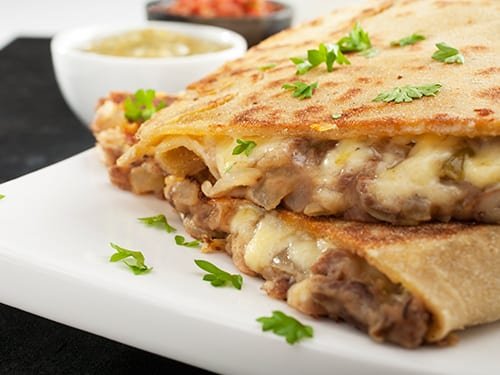
Honduran Cuisine – Quesadillas History and Background
Quesadillas, cheese-filled pastries, are a traditional Honduran dish that originated in the highland region of the country, where cheese and wheat flour are more common than in other parts of Honduras.
They are different from the Mexican tortilla-based dish of the same name, as they are more like sweet or savory pastries that are baked in the oven.
Quesadillas are usually eaten as a snack or breakfast, and are often accompanied by coffee or hot chocolate.
Honduran Cuisine – Quesadillas Ingredients
To make quesadillas, you will need the following ingredients:
- 2 cups of all-purpose flour
- 1/4 cup of butter, softened
- 1/4 cup of sugar
- 2 teaspoons of baking powder
- 1/4 teaspoon of salt
- 1/2 cup of milk
- 1 egg
- 1 cup of grated or crumbled cheese (queso fresco, mozzarella, or Monterey jack)
- Optional: 1/4 cup of raisins, nuts, or chocolate chips
Honduran Cuisine – Quesadillas Recipes
The steps to make quesadillas are as follows:
- Preheat the oven to 375°F (190°C) and grease a baking sheet.
- In a large bowl, whisk together the flour, butter, sugar, baking powder, and salt until crumbly.
- In a small bowl, whisk together the milk and egg until well combined.
- Add the milk mixture to the flour mixture and stir until a soft dough forms. If the dough is too sticky, add more flour. If the dough is too dry, add more milk.
- Turn the dough onto a lightly floured surface and knead for a few minutes until smooth and elastic.
- Roll out the dough into a 12 by 9 inch rectangle and sprinkle the cheese evenly over it. You can also add raisins, nuts, or chocolate chips if you like.
- Fold the dough in half to enclose the cheese and seal the edges well.
- Cut the dough into 12 equal pieces and place them on the prepared baking sheet.
- Bake for 15 to 20 minutes or until golden and puffy.
- Enjoy your quesadillas
Honduran Cuisine – Platanos en Tentacion (Caramelized plantains)

Honduran Cuisine – Platanos en Tentacion Background and History
Platanos en Tentacion, or Caramelized Plantains, is a traditional Honduran dish that can be translated as Plantains in Temptation. It is made with ripe plantains that are cooked with butter, sugar, cinnamon, and rum until they are golden and caramelized.
It is usually served as a side dish, not as a dessert, with roasted meat and white rice.
The history of Platanos en Tentacion is not very clear, but some sources suggest that it originated on the northern coast of Honduras, where wheat flour was introduced by Italian immigrants who worked for the Standard Fruit Company, a banana-growing empire.
The name of the dish may come from the visual similarities between beans and bullets (bala in Spanish), or from a legend about a tortilla-making woman who was shot but survived and continued to make tortillas.
Honduran Cuisine – Platanos en Tentacion Ingredients
To make Platanos en Tentacion, you will need the following ingredients:
- 4 ripe plantains, peeled and cut into 1-inch pieces
- 1/4 cup of butter
- 1/4 cup of brown sugar
- 1/4 cup of rum
- 1/2 teaspoon of cinnamon
- Powdered sugar and cinnamon for sprinkling
Honduran Cuisine – Platanos en Tentacion Recipe
The steps to make Platanos en Tentacion are as follows:
- Preheat the oven to 375°F (190°C) and grease a baking dish.
- Arrange the plantain pieces in a single layer on the prepared dish and sprinkle with the brown sugar and cinnamon.
- Dot the butter over the plantains and drizzle with the rum.
- Bake for about an hour, turning once, until the plantains are tender and caramelized.
- Sprinkle with powdered sugar and cinnamon and serve hot or warm.
- Enjoy!
Conclusion
In our journey to explore the world of Honduran cuisine, we have uncovered the richness of this Central American gastronomy. From traditional dishes like baleadas and sopa de caracol, to the fusion of influences that shape Honduran cuisine, it is clear that the flavors of Honduras are diverse and unique.
As we conclude, we want to emphasize the importance of preserving and celebrating culinary traditions. Honduran food culture tells a story of the country’s history and people, and the authentic flavors are a way to connect with and appreciate that history.
So we encourage you to embrace the flavors of Honduras in your own dining experiences. Whether it’s trying a traditional dish at a local restaurant or attempting a Honduran recipe in your own kitchen, there’s no better way to appreciate the richness of Honduran cuisine.
In the end, it’s not just about the food. It’s about the culture, the people, and the stories behind the flavors that make Honduran cuisine so special. So let’s savor every bite and continue to explore the delicious and unique world of Honduran cuisine.
FAQ’s
What is Honduran cuisine?
Honduran cuisine refers to the traditional food and culinary traditions of Honduras, a country located in Central America. It encompasses a wide range of dishes and flavors influenced by indigenous, European, and African cultures.
What is the main characteristic of Honduran Food?
Honduran food is known for its rich flavors and diverse dishes. From baleadas, a traditional tortilla filled with beans, cheese, and other ingredients, to the beloved dish called sopa de caracol, a flavorful conch soup, Honduran cuisine offers a unique culinary experience.
Complemented by local ingredients like plantains and seafood, Honduran food is a delight for the senses.
What is the Honduras National Dish?
The Honduras national dish is called baleadas, a popular street food made with flour tortillas filled with refried beans, cheese, and often accompanied by avocados and crema. It is a delicious and traditional meal that showcases the country’s culinary heritage.
What are some traditional Honduran Food?
Some traditional Honduran foods include baleadas (a tortilla filled with beans, cheese, and other toppings), sopa de caracol (conch soup), tamales, and plátanos fritos (fried plantains).
These dishes are beloved by locals and showcase the unique flavors of Honduran cuisine.
Can I try cooking Honduran recipes at home?
Absolutely! We will share some authentic Honduran recipes in this section that you can easily recreate in your own kitchen. Whether you’re craving a hearty soup or a flavorful main dish, our recipes will guide you through the preparation process and help you enjoy the taste of Honduras wherever you are.
How has Honduran gastronomy been influenced by other cultures?
Honduran gastronomy has been shaped by a fusion of influences from indigenous, European, and African cultures. These diverse culinary traditions have contributed to the unique flavors and ingredients used in Honduran dishes, creating a rich and vibrant food culture that reflects the country’s history and heritage.
What is Honduran Culture Food?
Honduran culture food is known for its diverse and flavorful dishes. The cuisine reflects a blend of indigenous, African, and Spanish influences.
Common ingredients include corn, beans, plantains, and seafood. Popular Honduran dishes include baleadas, tamales, and the iconic plato típico, a plate with rice, beans, meat, fried plantains, and cabbage salad.
What Are the Most Popular Foods in Honduras?
The most popular foods in Honduras include baleadas, a tortilla filled with beans, cheese, and avocado. Another favorite is the national dish, plato típico, consisting of rice, beans, meat, plantains, and tortillas.
Other popular dishes are tamales, pupusas, and the seafood soup known as sopa de caracol.
Why is it important to embrace the flavors of Honduras?
Embracing the flavors of Honduras allows us to appreciate the country’s rich culinary traditions and cultural heritage. By exploring and enjoying Honduran cuisine, we not only experience a diverse range of delicious flavors but also support the preservation and celebration of traditional food and cooking methods.
Gastronomy Of Honduras
Honduras boasts a diverse gastronomy, influenced by indigenous and Spanish culinary traditions. The cuisine of Honduras is characterized by dishes such as baleada, a tortilla filled with refried beans, cheese, and other fillings, and sopa de caracol, a popular seafood soup.
The gastronomy of Honduras showcases the country’s rich cultural heritage and flavors.
This Article was last edited on

